Consciousness Dictionary
Lorenz Attractor
DynamicsA set of chaotic solutions to the Lorenz equations, which describe a simplified model of atmospheric convection. Its phase portrait resembles a butterfly, making it a classic example of a strange attractor and a foundational concept in chaos theory. The system exhibits extreme sensitivity to initial conditions, where tiny differences in starting position lead to wildly different long-term behavior.
Complex Morlet Wavelet
MathA mathematical function used in signal processing to analyze time-frequency representations, particularly of oscillatory neural activity. It is essentially a (complex) sine wave tapered by a Gaussian curve, which allows it to measure the power and phase of different frequency bands (like theta, alpha, or gamma) at specific moments in time. This provides a detailed, high-resolution view of how brain rhythms change dynamically during cognitive tasks.
0.5
200
Origin of ChatGPT: The Physics of Intelligence
Video Neural Nets DynamicsA brilliant video by Art of the Problem that traces the conceptual lineage of modern AI from recurrent neural networks through dynamical systems and attractor networks. The video beautifully illustrates how concepts from physics and dynamical systems theory provide the mathematical foundation for understanding how neural networks process information and exhibit emergent intelligent behavior.
Spatially Distal Latency
Ring/BankDefinition:
The variable delay that arises when the Union Set current Ringframe (and Bank) must traverse a greater distance across the Real or Imaginal Schema to reach the locus of stimulation or attention.
The latency scales with real-world or postural separation — not neural conduction speed or local cortical wiring — because the Bank itself must physically translate through the modeled environment to re-register at the target site.
Mechanism:
When two regions of the Real Schema (e.g., a cat’s nose and tail) are spatially proximal in posture, the Bank can align to both within a single ringframe.
When those regions are distal (e.g., the tail stretched out), multiple ringframes are required for the Bank to traverse the intervening spatial extent.
Thus, conscious latency reflects the Bank’s traversal time across modeling space, not axonal distance.
Phenomenology:
Attention seems to “walk” through the actual spatial layout of the world-model, taking longer to reach regions that are farther away in real geometry.
The Bank’s traversal manifests as this delay — a lived latency of distance itself.
In the images below, assume the cat's attention and ringframe are at its nose smelling the rose when the tip of its tail is tapped. For the posture where the tip is distal, three ringframes (~three alpha waves) may be required before union set arrives. For the posture where the tip is proximal, a single ringframe (~single alpha wave) may suffice for the union set to move there from the nose. Note that the axon length from tip of tail to somatosensory cortex is same in both cases, indicating that the extra latency for posture 2 is purely due to the distance in modeling space. The tap stimulus arrives at same near-instant latency; it is the 'placing,' via moving union set there, which takes time. This is akin to a one-way sonar, where a velocity (of moving the union set/bank) is assumed, and time can then place the distance of the stimulus (from current ringframe) using time.
See also: Phase Flow and Frozen Posture.
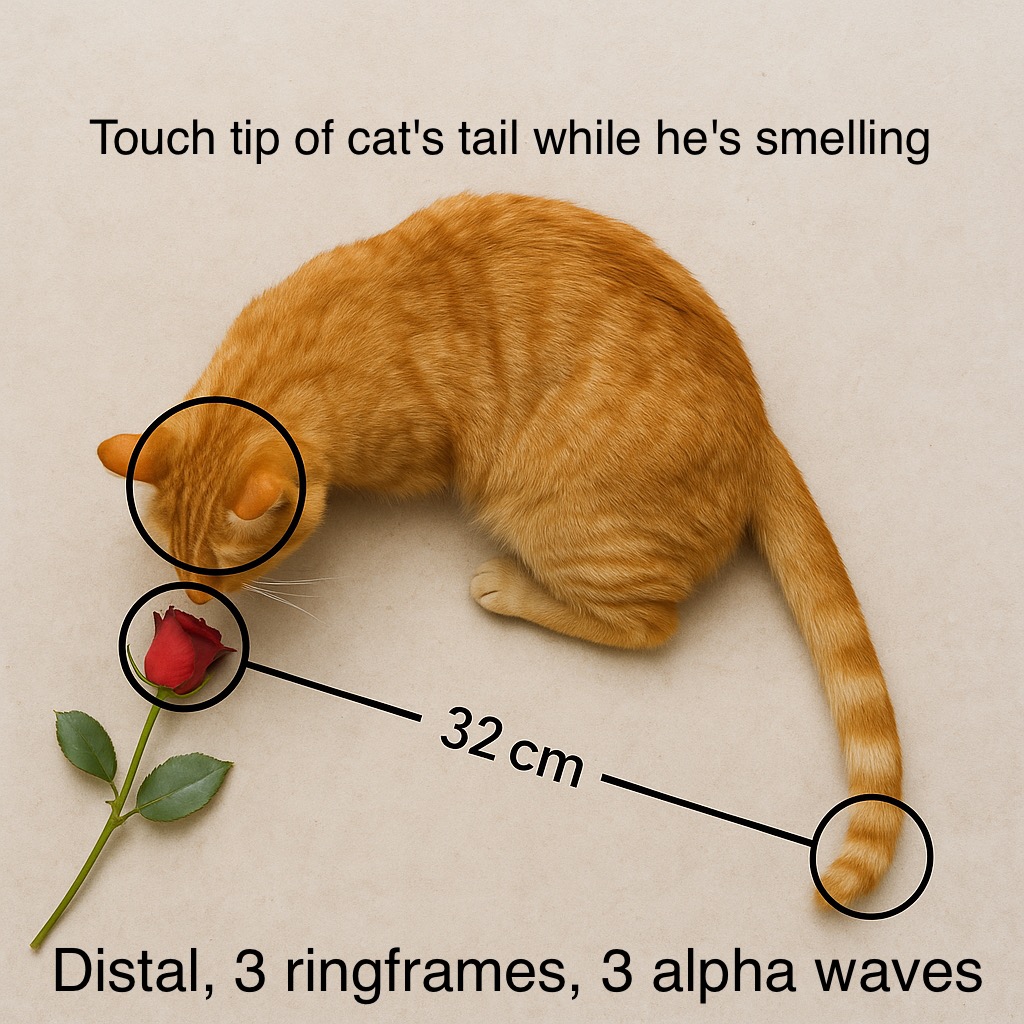

Chevrons
Ring/BankA chevron (zigzag) is an angled pattern often seen in stobed states, such as when wearing Kasina glasses set to strobe at 10 Hz. Dozens of parallel lines of chevrons get laid down with each revolution of the bank (roughly 80 ms to 1,000 ms cycles). Confusingly, I have depicted the chevrons on the inner cylinder Bank Schema; while the bank likely has such a print surface, the chevrons are actually observed printed upon the inner wall of the invisible, larger stator cylindrical cavity.
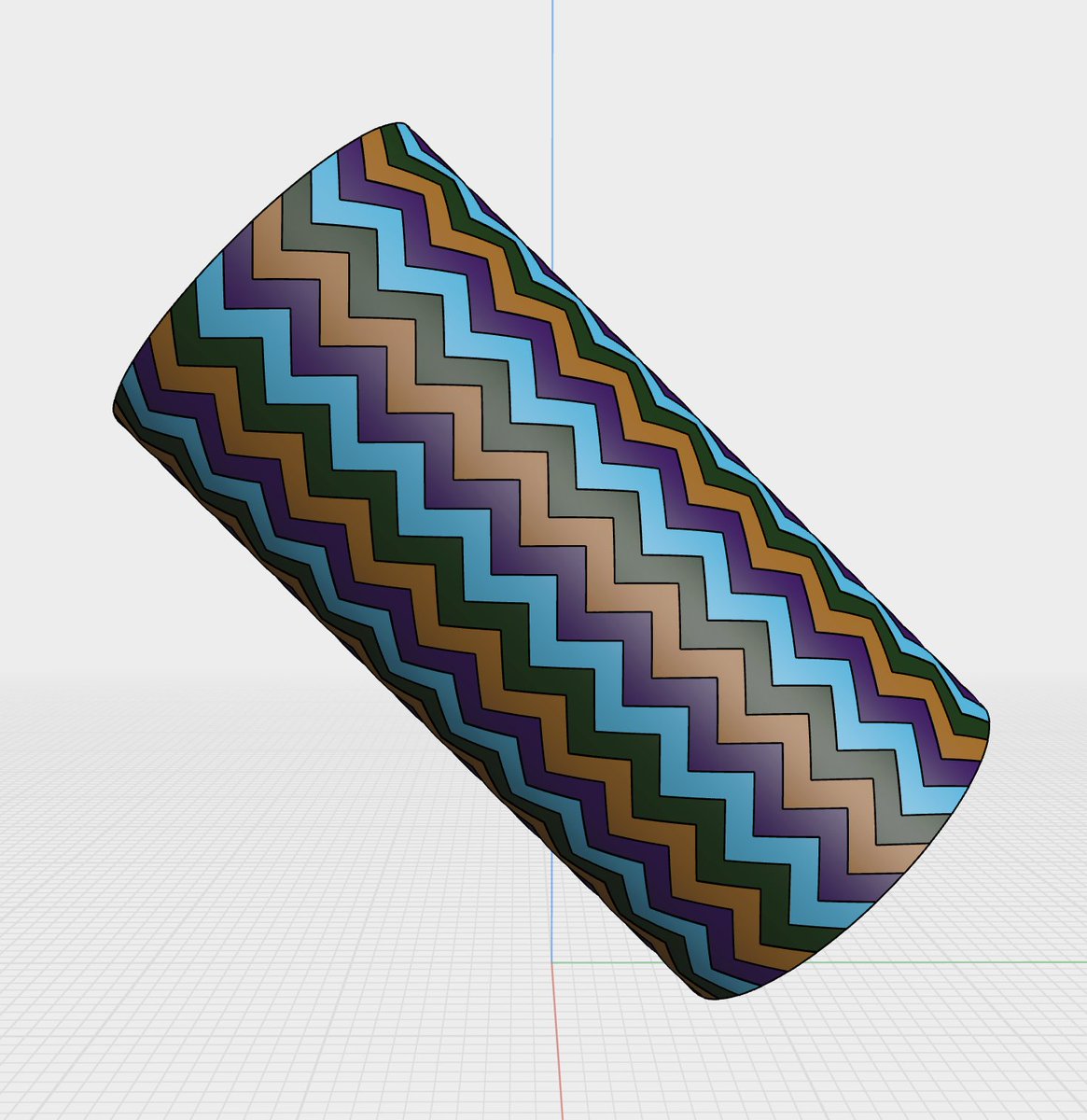
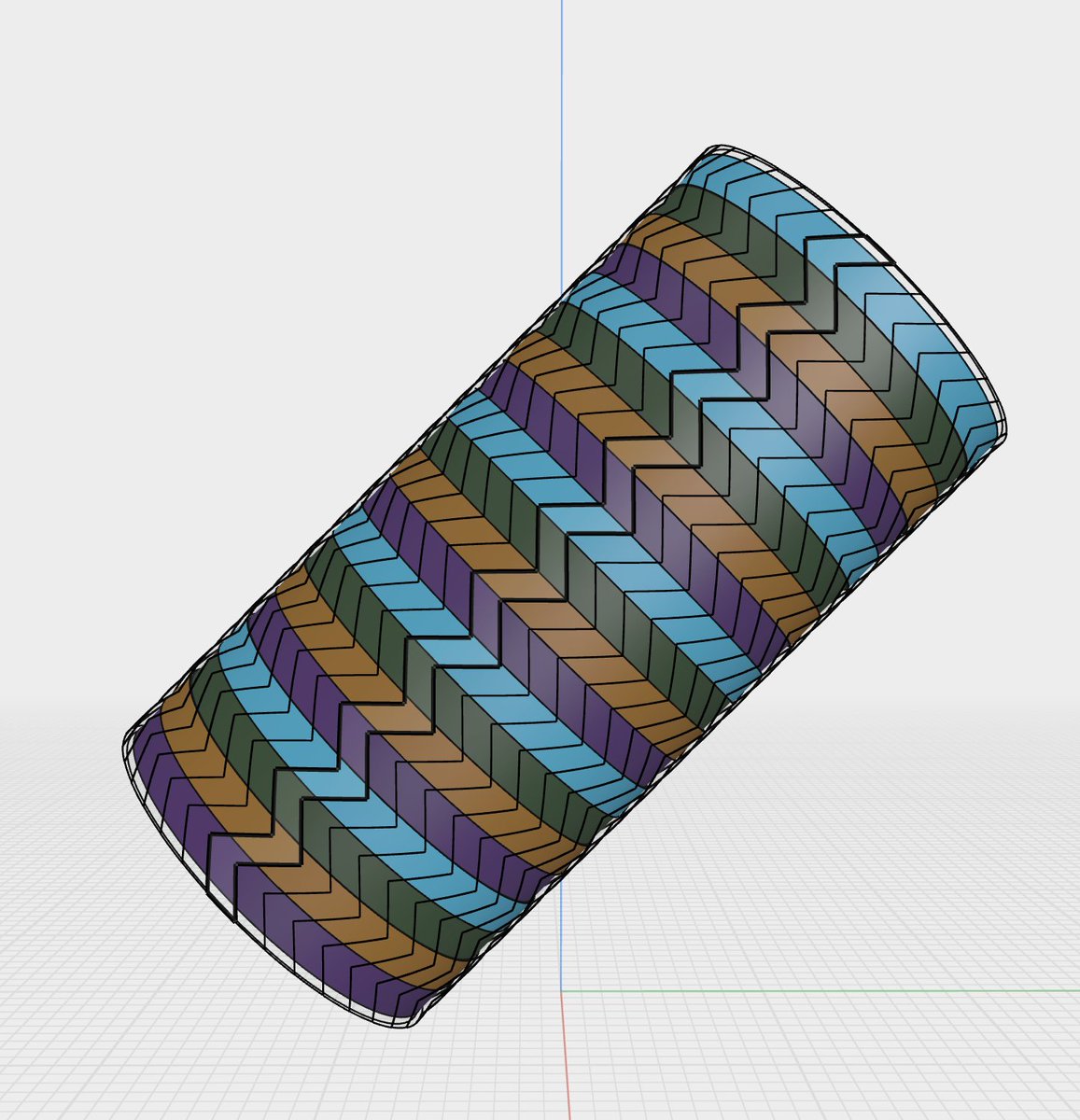

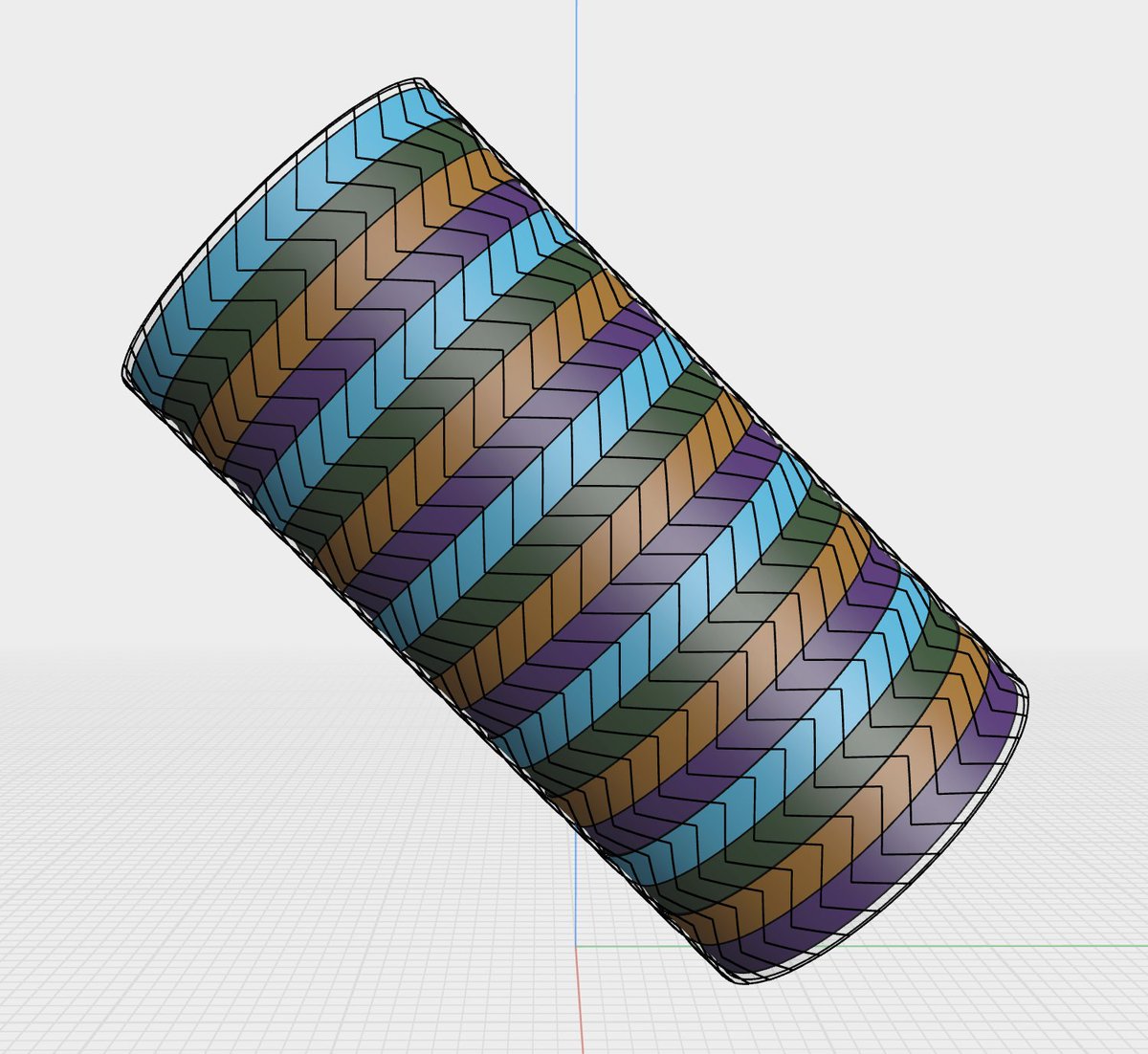
Qualia, Mainstream
MainstreamThe individual, subjective, and conscious experience of sensations. For example, the “redness” of the color red, the “painfulness” of pain, or the “sweetness” of sugar. Qualia are often considered the hardest problem of consciousness because their subjective nature makes them difficult to explain with objective, physical processes.
Postdictive Processing
Postdictive Processing Ring/BankThe brain's dual-temporal processing where ringframes have varying postdiction latencies fitting into the ongoing worldsim, while the worldsim itself uses varying prediction anti-latencies to anticipate its own 3D state.
Temporal Architecture:
- Filtered Mic Line (30 ms latency): The signal, perhaps decided by thalamus, upon which consciousness is booted and corrected/guided.
- Initial Boot (500-2000 ms): Worldsim startup requires substantial postdictive processing to establish baseline
- Postdictive Lag (5-500 ms): Ongoing ringframes take variable time to be interpreted and fit into worldsim
- Predictive Interpolation: Once running, worldsim uses prediction to float close to present, compensating for lag
- Unexpected Events: Mic line surprises disrupt the predictive float, requiring fresh postdictive processing
The Profound Insight:
Consciousness boots up slowly (500-1000 ms) through pure postdiction, then runs on dual-temporal processing: postdiction fitting ringframes into worldsim while prediction interpolates the worldsim forward. The predictive float keeps you near real-time, except when unexpected mic events force a postdictive recalibration.
Relationship to Agency:
This architecture enables sophisticated action—we act based on a worldsim that's mostly predictive (keeping us current) but grounded in postdictive reality checks. The initial boot time explains why waking up or shifting attention feels gradual.
The system maintains temporal coherence: prediction gives us the "now" feeling, postdiction ensures it matches reality, and the occasional mic surprise keeps everything honest.
Noise Gate
SignalsThe brain's dynamic amplitude threshold that controls which sensory signals reach conscious awareness, varying dramatically between normal and sedated states.
In a guitar pedal, a noise gate reduces low-volume input to zero, only allowing intentional strums of the guitar to come through. This is a choppy on/off type filter applied to the signal path.
State-Dependent Operation:
- Normal State: Minimal noise gating—rich gamma activity flows freely, allowing detailed conscious processing
- Sedated State: High noise gate threshold—only the strongest signals pass through, but when they do, they broadcast fully to capture "whole brain" attention
Sedation Mechanism:
Under hyperpolarization, the noise gate operates in a burst-refractory cycle: strong signal rises above threshold → widespread neural burst → long refractory period with high gating → wait → next strong signal triggers burst (~2Hz in heavy sedation).
World Simulation Maintenance:
These sparse bursts aren't isolated conscious moments—they're touchpoints that scratch to reveal content and attempt to float a worldsim. Consciousness can still interpolate the world simulation between 2-4Hz frames, though it becomes progressively harder as frame rate drops.
Frequency Consequences:
This explains the shift from gamma-dominated normal consciousness to low-frequency swamp during sedation. The high noise gate filters out high-frequency detail while permitting only occasional, powerful low-frequency events to serve as anchors for world simulation.
The noise gate thus acts as consciousness's volume knob—wide open during alert states for rich experience, nearly closed during sedation where only the loudest signals create sparse touchpoints for world simulation.
Qualia, Ring/Bank
Ring/BankThe qualia stream is largely temporo-geometric. It is largely the same as the attention stream.
Explicit qualia are the self-same as the mic voice event stream. Qualia have two components—tactile(somatic)(explicit) and paint(implicit). The intensity, timing, shape, location, and movement/acceleration/deceleration of the print of ringframes of consciousness is the explicit qualia stream. Red is not (or isn't necessarily) an explicit (texture) qualia in ring/bank understanding—it is an implicit (paint) qualia. Unexpected qualia additions from ring/bank thinking: acceleration qualia, selfness qualia, fear qualia, mood qualia, thought qualia, crunch of lettuce qualia. Qualia can be about reified objects outside the body (crisp crunch of lettuce) and be experienced outside of the body, as the entire worldsim is the creation of the brain.
Voiced Ringframes
Ring/BankRingframes that print with an attached mic event—a transient heartbeat, noise, note of music, change in direction of limb, etc. These are the frames where something actually “voices” into the worldsim, whether it is a sound, a syllable, a flash of movement, or an explicit thought-stroke.
They are the tracer strokes meaningfully locked to transients: the heartbeat pulse, the word onset, the drum hit, the geometric edge, the change in direction of a body limb, etc.
Voiceless Ringframes
Ring/BankRingframes that occur at their natural cadence without carrying any mic event or useful timing. It is akin to a video needing 24 frames per second. The timing of the frames doesn't matter when voiceless, only that they occur frequently enough to make it seem like continuous video. This is in contrast to the majority duty-mode of consciousness, which is voiced, where frames align to salient events.
Example: in a hypnagogic state, lying in silence, no inner dialogue, no sounds—just 3D imagery of ongoing thought—which you realize is getting printed or 'scratched-to-reveal' by ringframes whose timing may be about 10 Hz but not locked to anything in particular.
Time Schema
Ring/BankThe temporal framework that organizes conscious experience into a flowing sequence of "ringframes"—discrete (or continuous) sampling via the Union Set (of Bank, Real, and Imaginal Schemas). The Time Schema maintains a fading history of recent ringframes, creating the illusion of continuous awareness while actually operating through rhythmic sampling.
It governs the transition between different temporal modes: from continuous phasic scanning to discrete interrupt snapshots, with timing determined by the competition between internal baseline rhythms and external event salience. The schema enables both real-time perception and the integration of recent history for content determination.
Filler Ringframes
Ring/BankRingframes that are tied to an expected stream of content (heartbeat, syllable, perceptual event) but which arrive when there is no actual event to bind. They still print, but print nothing meaningful, serving as placeholders.
Example: while tracking heartbeat, one ringframe prints the first thump, the next fires in the gap and maps to nothing, and the following one prints the next thump. The empty middle frame is a filler ringframe: structurally present, but meaningless.
Continuous Phasic Mode
Ring/BankA phasic mode of ring operation where the completion of one ring's cycle (at phase 2π) coincides precisely with the initiation of the next ring's cycle (at phase 0). This creates seamless, uninterrupted cycling with no inter-cycle interval, making the 0-to-0 interval equal to the 0-to-2π interval.
Example: In visual perception, this mode might support the experience of smooth, continuous motion where each ring's "scratching" of visual content flows directly into the next without temporal gaps in conscious experience.
Discontinuous Phasic Mode
Ring/BankA phasic mode characterized by a period of baseline activity or silence between the completion of one ring's cycle (at 2π) and the initiation of the next (at 0). The 0-to-0 interval exceeds the 0-to-2π interval, creating a measurable inter-cycle gap.
Compressed Discontinuous Phasic Mode
Ring/BankA variant of discontinuous phasic mode where the active phase duration is significantly shortened while maintaining the same cycle period, resulting in extended inter-cycle intervals and brief, intense periods of conscious content access.
Isochronal Phase Compression
Ring/BankA dynamic pattern where the active phase duration (0-to-2π interval) progressively shortens over successive cycles while the cycle period (0-to-0 interval) remains constant. This results in a decreasing duty cycle and increasing inter-cycle intervals without changing the fundamental cycling frequency.
Example: In sedation, one may notice a gradual shift, in the behavior of the union set, from phasic to interrupt mode. This requires phase compression or speeding of the tracer.
Cycle Period (T_cycle)
Ring/BankThe fundamental time interval from the initiation of one ring's cycle (phase 0) to the initiation of the next cycle (phase 0). This determines the basic rhythmic frequency of ring operation and represents the total duration of a complete cycle including both active and silent periods.
Example: If a ring completes 10 full cycles per second, the cycle period is 100ms, representing the fundamental temporal building block of that ring's contribution to conscious experience.
Bank Chirality
Ring/BankDefinition: The mirror relation between two complementary Banks—one expressed outward as the exosomatic bank (world-facing) and the other inward as the introsomatic bank (self-facing). Each maintains the same geometric schema but opposite handedness, as though mirrored across a midline or switching plane between world and body models. Or, perhaps there is traversal through a 4th modeling dimension to allow rotation of right-handed bank through a plane into the left-handed bank and vice-versa.
Geometry: When the Bank is projected in front of the observer, its local fixtures (e.g., the broken glass reference) appear offset and tilted to the right, with the fracture facing the observer—right-handed in modeling space. When attention is directed into the body (e.g., right lung), the same geometry inverts—fracture facing outward, bank offset rightward, tilted rightward—manifesting as a left-handed mirror copy. The two are spatial inverses sharing one schema architecture.
Principle: Bank chirality expresses a dual instantiation rather than a spin direction. The psyche seems to operate with paired mirror Banks: one outward (object world), one inward (embodied self). Awareness crossing the interface plane between them experiences a reversal of handedness—what was external form becomes internal volume. The mechanism of the flip is unclear; it may be topological (a mirror symmetry or parity swap across the body’s midline) rather than a continuous rotation.
Phenomenology: Exosomatic (right-handed) banks feel like observed geometry—seen in front, external, model of world. Introsomatic (left-handed) banks feel like lived geometry—enclosing, volumetric, model of self. The observed chirality inversion marks the experiential border between outer perception and inner embodiment.
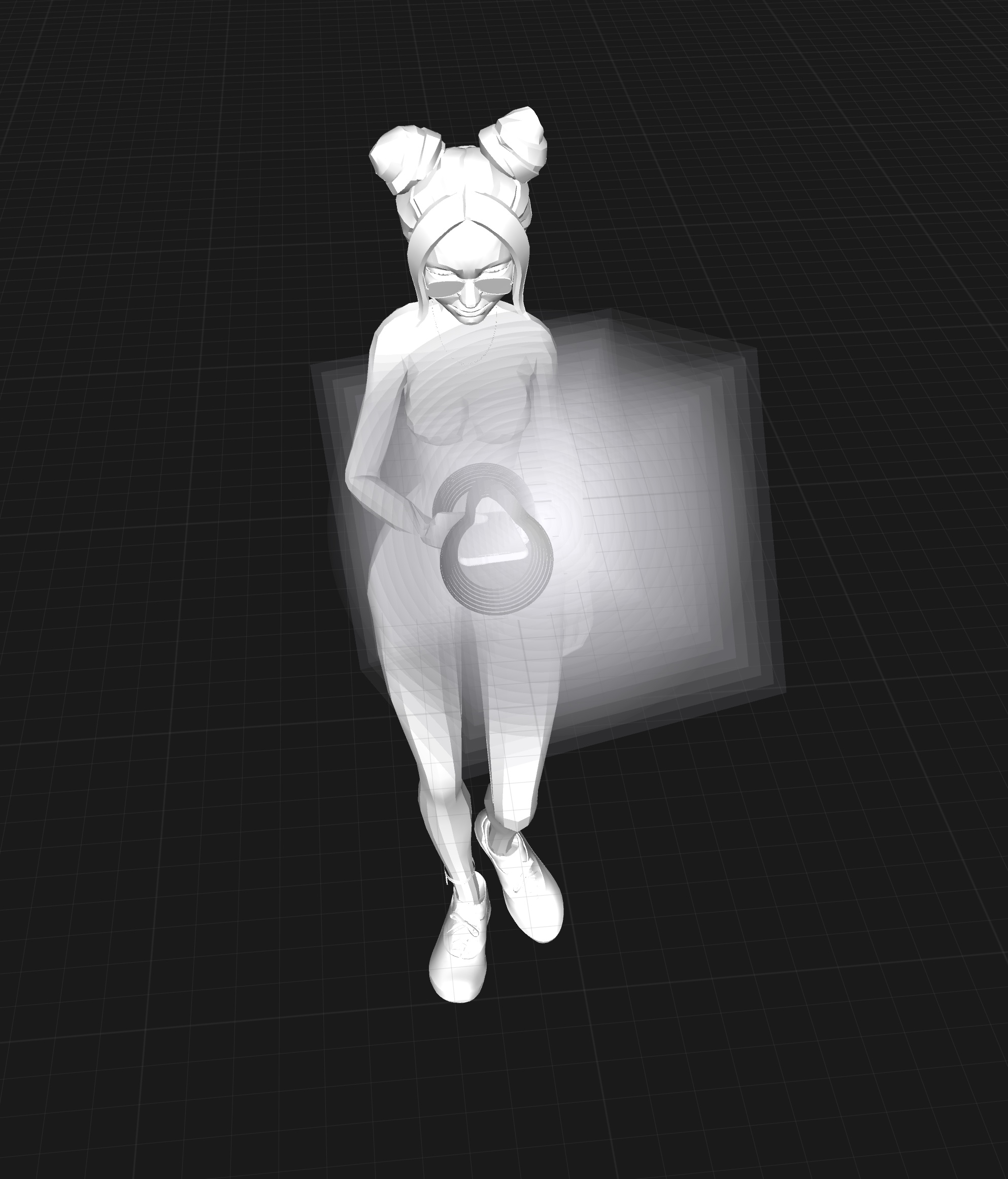
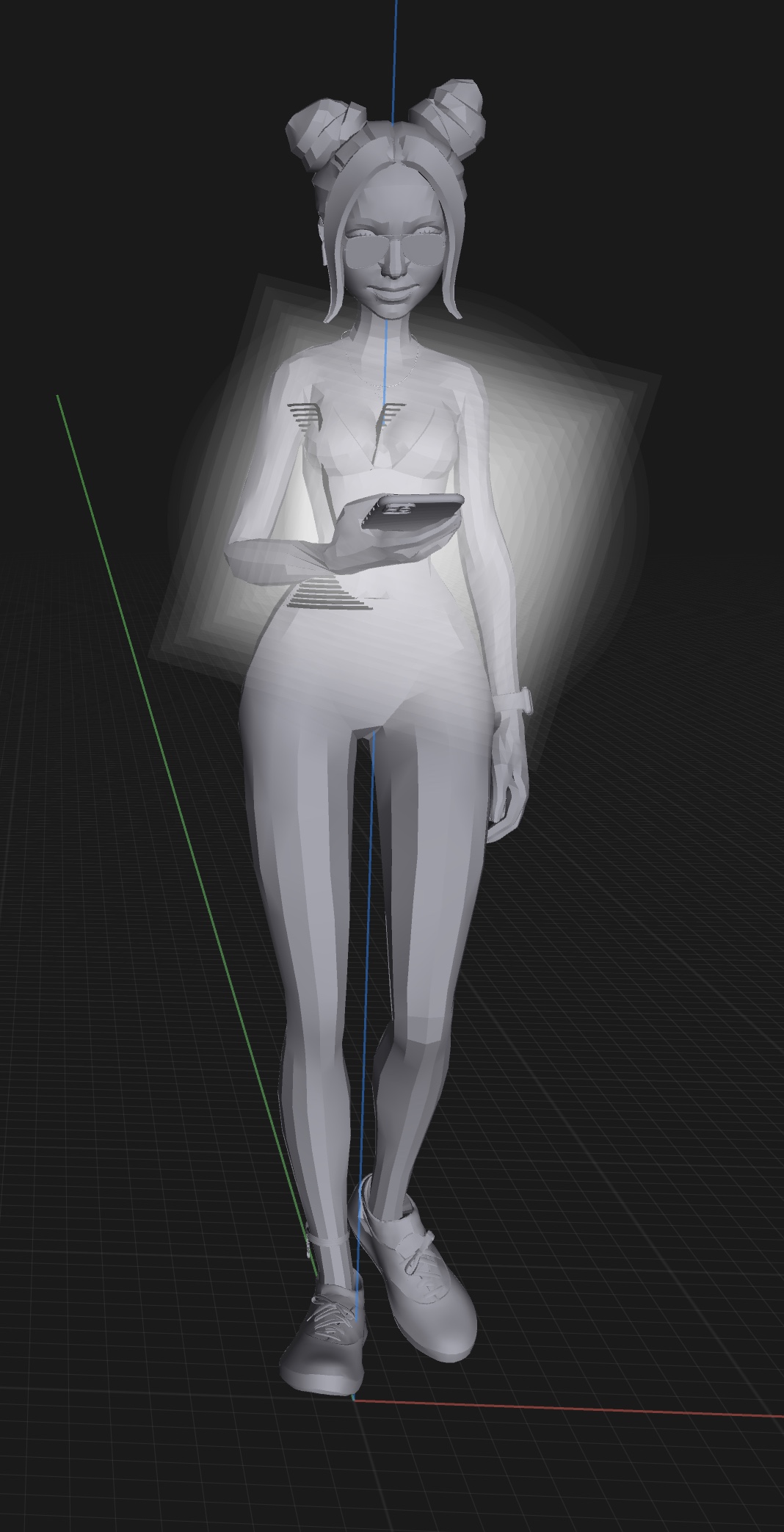

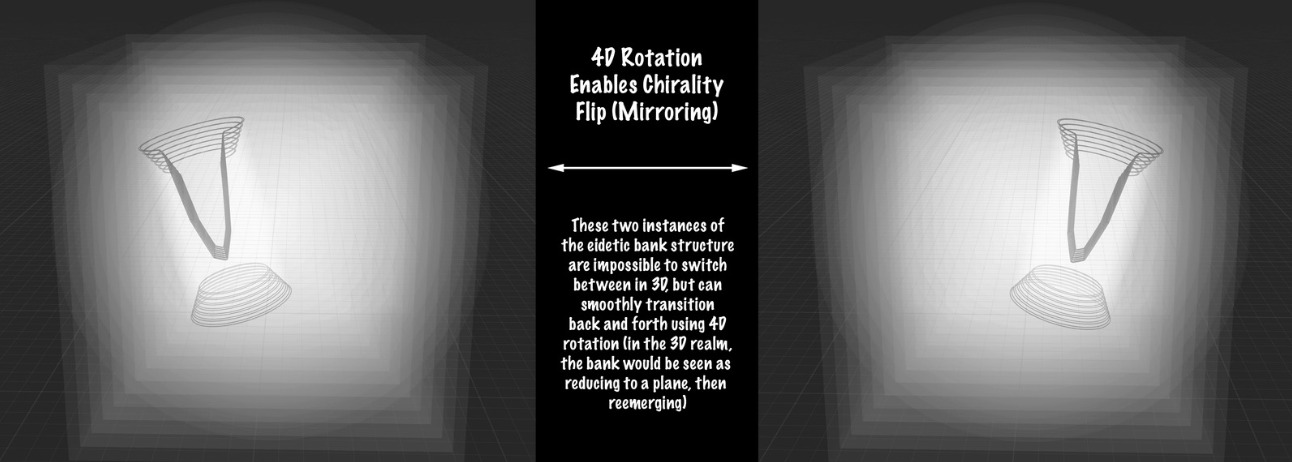
Phase-Locked Geometric Inference
Ring/BankDefinition: Basically another name for Paint Capture or Paint Pressure. A perceptual process where a 0D tracer samples sparse points along dynamically updating 1D trajectories that systematically explore a target object's 2D surface shell. This minimal sampling provides just enough spatial-temporal constraints for the brain's predictive models to generate the complete, animated 3D representation through automatic posterior completion.
Core Insight: The system doesn't render the full object—it provides sparse spatial anchors that trigger the brain's pre-computed generative models of how that object moves and deforms.
Mechanism:
- A 0D tracer follows phase-locked 1D paths across the object's inferred 2D surface.
- At each phase position, it samples a single point on this surface shell.
- These sparse samples (e.g., nose-tip, upper-lip, chin-contour) serve as spatial keyframes.
- The brain's predictive models automatically interpolate and animate the full 3D structure between these anchors.
How It Works:
- The audio stream provides temporal structure, phrases that often map to certain small body/face movements, and ethnic/age/social/personality cues.
- The sparse geometric samples provide spatial registration points.
- The brain's extensive prior knowledge of human faces handles the heavy lifting of animation.
- Together, they create the illusion of a fully rendered, dynamically animated 3D face.
Example: Hearing "Hello" triggered phase-locked geometric inference, where sparse tracer samples at Lionel Richie's facial landmarks provided just enough spatial data for the brain's face-model to generate the complete singing animation in real-time.
Tracer Capture
Ring/BankDefinition: A physical spasm or jerk caused by the direct geometric capture of a body-schema element by a nearby tracer. The initiating event is the forced realignment of the internal body model to the tracer’s coordinate; the ensuing muscular motion is a secondary, automatic consequence of the body schema’s servo-link to the physical body. See Time Division Spatial Addressing—Linear for example where tracer follows same ring template at head, then moves 6" toward feet and repeats, then moves again 6" towards feet, etc., where the whole cycle may take one second. The ring at the knee, if close enough to the knee, may jerk the knee over in synchrony with printing the ring.
Mechanism:
1. Geometric Capture Phase — The tracer’s high-intensity coordinate (possibly a frequency-encoded point) dominates, pulling a nearby body-schema voxel (e.g., the knee) over to it (this could happen in frequency-coding if the closeness of frequency values of the loud tracer influenced neurons encoding knee voxel to realign values). This creates a modeling-space conflict where the tracer’s geometry overrides proprioceptive input.
2. Servo Resolution Phase — Because the physical body is servoed to maintain alignment with its internal model, the displacement of that model drives a reflexive correction: the real limb jerks to match the schema’s new coordinates. The motion is incidental—an aftershock of representational realignment, not a volitional act.
Phenomenology: Felt as a sharp, involuntary bodily jolt perfectly synchronized with the tracer’s passage. In the moment, the sensation is of an authentic muscular jolt, but its cause is perceived as external and geometric—the feeling is of the body being pulled by an outside force, not of initiating a movement from within. Only later analysis reveals that the initiating event was the geometric capture of the avatar’s limb-schema, with the physical limb following in lockstep through its servo linkage.
Significance: Reveals a strict control hierarchy—Tracer Geometry → Body Schema → Physical Body—showing that motor output can arise from geometric dominance within the Bank rather than from volitional command. Demonstrates that the body schema is an active, revisable component of worldsim, and that physical agency follows its geometric state rather than defines it.
Paint Capture
Ring/BankDefinition: The phenomenon where the rendered 2D surface shell of paint content (such as Lionel Richie's face during audio-to-visual reconstruction) actively warps or captures the trajectory of the ringframe tracer. The painted surface geometry becomes the dominant attractor, overriding the tracer's predetermined path to instead follow the contours of the rendered content.
Mechanism:
1. Surface Shell Dominance — The strongly rendered 2D surface of the content (face, body shell) creates geometric "contour channels" that the tracer cannot resist following. The paint's surface topology becomes the actual trajectory constraint.
2. Dynamic Path Override — Instead of following its pre-computed ring trajectory, the tracer gets captured by and follows the evolving contours of the painted surface in real-time, effectively becoming a "contour tracer" rather than a geometric sampler.
Phenomenology: Experienced as the tracer being "magnetically pulled" to trace the exact contours of the rendered surface—following Lionel's jawline, tracing his lips as they move, tracking the curve of his cheekbones. The tracer appears to be "riding the rails" of the painted geometry rather than independently sampling space.
Significance: Reveals that in highly detailed reconstructions, the paint content can achieve geometric dominance, effectively "programming" the tracer's path in real-time based on the rendered surface morphology. This demonstrates a fluid hierarchy where content and sampling mechanism can exchange dominance roles depending on rendering intensity and predictive certainty.Contrast with Tracer Capture: While Tracer Capture shows the geometric addressing system dominating the body schema, Paint Capture shows the rendered content dominating the geometric addressing system—completing a full cycle of mutual influence between the Bank's architecture and the worldsim's painted reality.
Paint Pressure
Ring/BankDefinition: Less rapid than Paint Capture, paint pressure is the deformation of ringframe geometry by expansive or complex paint content that exceeds the ring's default spatial capacity. When rendered content demands more representation space than the current ringframe provides, the system responds by progressively enlarging, shifting, or reshaping subsequent ringframes to accommodate the content's spatial requirements.
Example: When interpreting planar ringframes against a large wall surface, you might see the rings progressively scale up and shift laterally as the system struggles to map the limited ring geometry to the extensive wall surface—the paint's spatial demands literally pushing the ringframes outward.
Active Phase Duration (T_phase)
Ring/BankThe time required for a ring's tracer to complete its trajectory from phase 0 to phase 2π. This represents the duration of active "scratching" when the ring accesses and reveals conscious content from its associated bank.
Example: In a 100ms cycle period, if the tracer takes 80ms to complete the 0-to-2π trajectory, the active phase duration is 80ms, representing the window during which conscious content is actively being generated and experienced.
Inter-Cycle Interval (ICI)
Ring/BankThe period of baseline activity or silence between the completion of one ring's active phase (at 2π) and the initiation of the next cycle (at 0). Calculated as ICI = T_cycle - T_phase, this interval represents time when the ring is not actively scratching content.
Example: With a 100ms cycle period and 80ms active phase duration, the 20ms inter-cycle interval represents a brief period where conscious content from that ring may fade or be absent before the next cycle begins.
Phasic Mode to Interrupt Mode (Gradient), Visualization
Video Ring/BankA 3D animation demonstrating a gradient of modality of printing Ringframes into Time Schema: Continuous Phasic, Discontinuous Phasic, Compressed Discontinuous Phasic, and Interrupt Mode. The visualization assumes a steady Bank printhead with printed ringframes flowing and fading in time schema, illustrating a key distinction of behavior of the Union Set. The z-axis represents Flow in Time Schema, with helices a result of continuous phasic and discrete rings a result of interrupt mode printing.
Natural Law
MainstreamThe fundamental ethical principle that guides all moral action: "Do no harm to any sentient being, except in genuine self-defense." This universal maxim transcends political and religious boundaries, serving as the bedrock of compassionate coexistence.
Natural law emerges from the deep well of empathy—the capacity to feel with others and recognize their inherent worth. It harmonizes with the protection of innocent life, ethical treatment of animals, and the defense of human dignity across all cultures and circumstances.
This principle stands against cruelty in all its forms: from the quiet violence of economic oppression to the overt brutality of armed conflict. It calls us to see every person as worthy of protection, every life as sacred, and every act of harm as a violation of our shared humanity.
Natural law invites us into a more courageous way of being—one where we extend our circle of concern beyond tribe and nation to embrace all who share the capacity to suffer and dream. It represents our highest potential: to build a world where safety and dignity are not privileges, but birthrights.
Integrated Information Theory (IIT)
MainstreamA theory of consciousness that posits consciousness is a physical property of matter that has the ability to cause-and-effect a large repertoire of states in an irreducible way. Consciousness is theorized to be related to the system's “phi” value, which is a measure of its integrated information.
Global Workspace Theory (GWT)
MainstreamA theory that models consciousness as a “global broadcast” system in the brain. Unconscious processing modules compete for access to a central “global workspace,” and whatever information wins access is broadcast to the entire system, making it conscious. The “winner-take-all” competition is often likened to a theatrical stage, where a limited number of actors are in the spotlight.
Dynamical System
DynamicsA mathematical model describing the evolution of a system's state over time, governed by a fixed rule. In neuroscience, it's used to model brain activity as a trajectory through a state space.
State Space
DynamicsAn abstract space where each point represents a possible state of a dynamical system. The system's behavior is represented as a path or “trajectory” through this space.
Phase Portrait
DynamicsA geometric representation of the trajectories of a dynamical system in its state space. It visualizes the flow of states and highlights key features like fixed points and limit cycles.
Attractor
DynamicsA set of states toward which a dynamical system tends to evolve, regardless of the initial state. Examples include fixed points and limit cycles.
Fixed Point
DynamicsA point in state space where a dynamical system remains at rest. It represents an equilibrium state. A system can have stable, unstable, or saddle fixed points.
Limit Cycle
DynamicsA closed loop in a phase portrait that represents a stable, periodic, and self-sustaining oscillation. In neuroscience, it can model rhythmic brain activity like spiking or brainwaves.
Basin of Attraction
DynamicsThe set of all initial conditions (states) from which a dynamical system will evolve to a specific attractor.
Strange Attractor
DynamicsA fractal-like attractor that exhibits chaotic behavior. Trajectories within it never repeat but remain bounded within a specific region of the state space. They are often associated with non-linear systems.
Bifurcation
DynamicsA qualitative change in a dynamical system's behavior as a result of a small change in a system parameter. For example, a stable fixed point might split into a limit cycle, marking the onset of rhythmic oscillations.
Hysteresis
DynamicsThe phenomenon where the current state of a system depends not only on its current input but also on its history. In neural dynamics, it can describe how a neuron’s response to a stimulus depends on what has happened before.
Spiking Neuron Model
DynamicsA simplified mathematical model of a biological neuron that generates a discrete "spike" or action potential when its membrane potential reaches a threshold.
Action Potential
DynamicsA rapid, temporary rise and fall in the voltage across a neuron's membrane. It is the fundamental electrical signal used by neurons for communication.
Hodgkin-Huxley Model
DynamicsA mathematical model that describes how action potentials in neurons are initiated and propagated. It is a set of non-linear differential equations that explain the flow of ions across the cell membrane.
Izhikevich Model
DynamicsA simplified spiking neuron model that can reproduce a wide range of firing patterns seen in real neurons, while being computationally more efficient than the Hodgkin-Huxley model.
Lyapunov Exponent
DynamicsA measure of the rate at which nearby trajectories in a dynamical system diverge. A positive Lyapunov exponent is a key indicator of chaotic behavior.
Saddle Node Bifurcation
DynamicsA type of bifurcation where two fixed points (one stable and one unstable) collide and annihilate each other as a parameter is varied.
Unstable Manifold
DynamicsThe set of all points in a state space that approach an unstable fixed point as time runs backward.
Subthreshold Oscillation
DynamicsA rhythmic fluctuation in a neuron's membrane potential that does not reach the firing threshold to generate an action potential.
Firing Rate
DynamicsThe number of action potentials (spikes) a neuron produces per unit of time, often used as a measure of a neuron's activity.
Non-linear Dynamics
DynamicsThe study of systems where the output is not directly proportional to the input. The brain is a classic example of a non-linear dynamical system.
Chaos
DynamicsThe behavior of certain non-linear dynamical systems that are highly sensitive to initial conditions. This is popularly known as the "butterfly effect."
Eugene Izhikevich
PersonA prominent computational neuroscientist known for his simplified yet powerful mathematical models of spiking neurons, particularly the Izhikevich model which is celebrated for its efficiency and ability to reproduce complex firing patterns.
Dynamical Systems in Neuroscience
Book Dynamics NeuroscienceA comprehensive textbook by Eugene Izhikevich that provides a detailed overview of the mathematical foundations of spiking neuron models and neural dynamics, bridging the gap between computational neuroscience and dynamical systems theory.
On Intelligence
Book Predictive ProcessingA book by Jeff Hawkins that outlines his theory of Hierarchical Temporal Memory (HTM), arguing that the neocortex uses a common algorithm to recognize patterns and make predictions, which forms the basis of intelligence.
A Thousand Brains
Book Predictive ProcessingJeff Hawkins’s follow-up book to "On Intelligence," which further develops his theory by proposing that the neocortex learns a complete model of the world by using a thousand independent models stored in cortical columns, each making predictions and collectively agreeing on a single perception.
Ralph Abraham
PersonAn American mathematician and a founder of the visual mathematics movement. He is known for co-authoring the four-volume book series "Dynamics: The Geometry of Behavior," which introduced dynamical systems and chaos theory to a wider audience with a strong emphasis on geometric intuition.
Alan Hodgkin
PersonA British physiologist and biophysicist who, along with Andrew Huxley, developed a groundbreaking mathematical model to describe the initiation and propagation of the action potential in neurons. They were awarded the Nobel Prize in Physiology or Medicine in 1963 for their work.
Andrew Huxley
PersonA British physiologist and biophysicist who, along with Alan Hodgkin, developed the Hodgkin-Huxley model. His contributions were essential in describing the mechanisms by which ions flow through cell membranes during an action potential.
Artem Kirsanov
PersonA computer scientist and video creator known for his engaging explanations of complex topics in neuroscience and computer science, including his video exploring the elegant geometry behind Izhikevich's neural computation model.
Free Energy Principle and Predictive Processing
Video Predictive Processing NeuroscienceA clear and accessible presentation by Shamil Chandaria explaining the Free Energy Principle and Predictive Processing framework. The video breaks down how the brain minimizes surprise through hierarchical predictive models, creating a unified theory of perception, action, and consciousness. Chandaria demonstrates how this Bayesian approach provides a mathematical foundation for understanding the mind as an inference engine constantly updating its models of the world.
Elegant Geometry of Neural Computations
Video Dynamics NeuroscienceA YouTube video by Artem Kirsanov that provides a clear and intuitive explanation of the geometric principles underlying the Izhikevich spiking neuron model, helping to visualize how a simple set of equations can produce complex, realistic neural behavior.
Whole Cortex AM-PCA Rings Arising During Song Listening
Video Ring/Bank DynamicsExperimental evidence showing 5.15 Hz amplitude modulation PCA rings in the gamma band (50-60Hz) of EEG during music listening. This demonstrates the core Ring/Bank Theory prediction that conscious processing organizes into rotating wave patterns of amplitude modulation propagating across cortex. The 5.15 Hz ring frequency suggests a fundamental temporal architecture for conscious auditory experience.
Brad Caldwell (originator of Ring/Bank Theory)
Dynamics: The Geometry of Behavior
Book DynamicsA seminal four-volume book series by Ralph Abraham and Christopher Shaw that introduced the concepts of dynamical systems and chaos theory to a broad audience using vivid visual examples and geometric interpretations.
The Hard Problem
MainstreamA term coined by philosopher David Chalmers to distinguish the question of subjective experience (why does it feel like anything to be us?) from the “easy problems,” which are objective, functional questions about how the brain processes information and behavior. The Hard Problem asks how physical processes give rise to phenomenal consciousness.
Frame
Ring/BankAn incomplete (2D manifold) interpretation of a mic voice event, pre-meaning (incipient to full meaning attachment; i.e., prior to 'scratch-to-reveal' revelation of intended touched content).
A low-dimensional (2D manifold) reification (a concrete representation) of an event or stimulus as it is processed in the brain's time schema. These geometric representations are the fundamental building blocks of conscious experience.
The keyframe at the beginning of a unit or chunk (or bin) of conscious reality, slightly analogous to a single frame in a film. In time schema, there is a series of distinct, low-frequency snapshots (amplitude crests of mic voice) that, once they unveil the content they are supposed to touch, the content is time-interpolable, and this content is what feels like smooth, flowing reality. The mic changes voices roughly 2-4 times a second, with each voice's speech (amplitude modulations) getting interpreted into its own short series of amplitude-varied ringframes (or full worldsim content).
Ring
Ring/BankAn incomplete (0-1D manifold) interpretation of a mic voice event, pre-meaning (incipient to full meaning attachment; i.e., prior to 'scratch-to-reveal' revelation of intended touched content).
A low-dimensional (0-1D manifold) reification (a concrete representation) of an event or stimulus as it is processed in the brain's time schema. These geometric representations are the fundamental building blocks of conscious experience. When the brain's buffer is not as exceeded, the mic voice events are interpreted more fully into 2D frames or even into the 3D volumetric worldsim content supposed to be touched by the ringframes.
The keyframe at the beginning of a unit or chunk (or bin) of conscious reality, slightly analogous to a single frame in a film. In time schema, there is a series of distinct, low-frequency snapshots (amplitude crests of mic voice) that, once they unveil the content they are supposed to touch, the content is time-interpolable, and this content is what feels like smooth, flowing reality. The mic changes voices roughly 2-4 times a second, with each voice's speech (amplitude modulations) getting interpreted into its own short series of amplitude-varied ringframes (or full worldsim content).
Below, the grey is the deduced content (your body). It is deduced from the neural activity, which begins at red dot and progresses along yellow ring trajectory through orange, green, and blue dots over about 500 ms in this case. The raw neural activity is mapped to the ring more incipiently than it 'scratches-to-reveal' the location and presence of your body. In actuality, it is the changing Content that 'moves' the neural activity around the ring trajectory. The neural activity doesn't literally move. In this way, geometric understanding can be gained by the structured or orchestrated changing of what neural activity is 'about.' Matching the change in 'about' with the change in time and an assumed shape trajectory binds the conscious brain together.
This is a depiction of the first ring experienced. It was Phasic Mode, meaning the ring did not print all at once, but rather began at the location denoted by the red dot and moved around to orange, etc. The encoding at the red dot was 'left elbow will open,' then at the orange dot was my mood/outlook, then at the green dot encoded what noise I would hear the furnace make, then I'm not sure what the blue dot was, perhaps visual field information if I wanted to focus in enough. After the ring was laid down by the tracer over roughly 500 ms, there was a gap where worldsim churned through experiencing the 3D video of that infomation, followed by another ring. The ring, as a keyframe header of sorts to the chunk of experience, seemed to lay down flat informational encoding. The gear turn between rings seems to be the living out of that info.
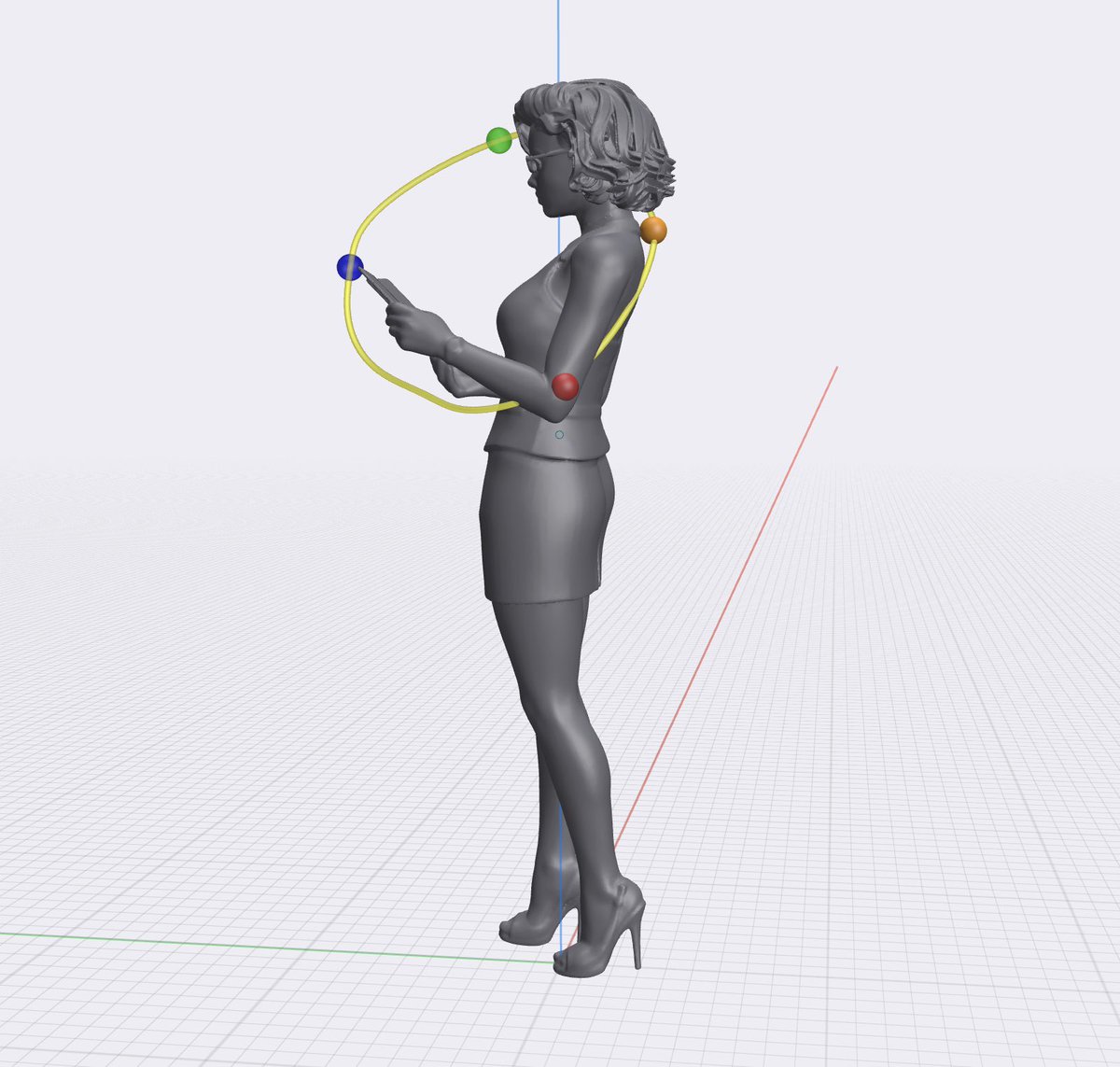
Cone Spirograph
Ring/BankImagine a spirograph set, but the inner rotor and outer stator are both solid cone surfaces. In the demonstration below, the cones are upside-down, and only the inner cone Bank Schema behavior is depicted. The presense of a larger stator is not seen perceptually; rather, it is assumed to exist from the behavior of the smaller rotor.
Cylinder Spirograph
Ring/BankImagine a spirograph set, but the inner rotor and outer stator are both solid cynlinder shells. In the demonstration below, only the inner cylinder is shown, as part of the Bank Schema. The zigzags (Chevrons) are sometimes laid down during strobed states (such as when wearing Kasina strobe glasses, flashing at 10 Hz). The frequency of Kasina glasses (/neural oscillations in V1) is sometimes exactly the rate of the bank revolution, tying the rate of rhythmic stimulus and brain oscillation directly to the rate of geometric behavior in perception. For example, Kasina strobe glasses set at 13 Hz, each flash may appear as the bank getting back from a revolution and impacting to create the perceptual flash. Rhythmic timing often equals revolution timing.
Sphere Spirograph
Ring/BankImagine a spirograph set, but the inner rotor and outer stator are both solid sphere shells. In the image below, the Bank Schema serves as the inner rotor. Perhaps a larger, invisible copy of the Bank serves as the outer stator.
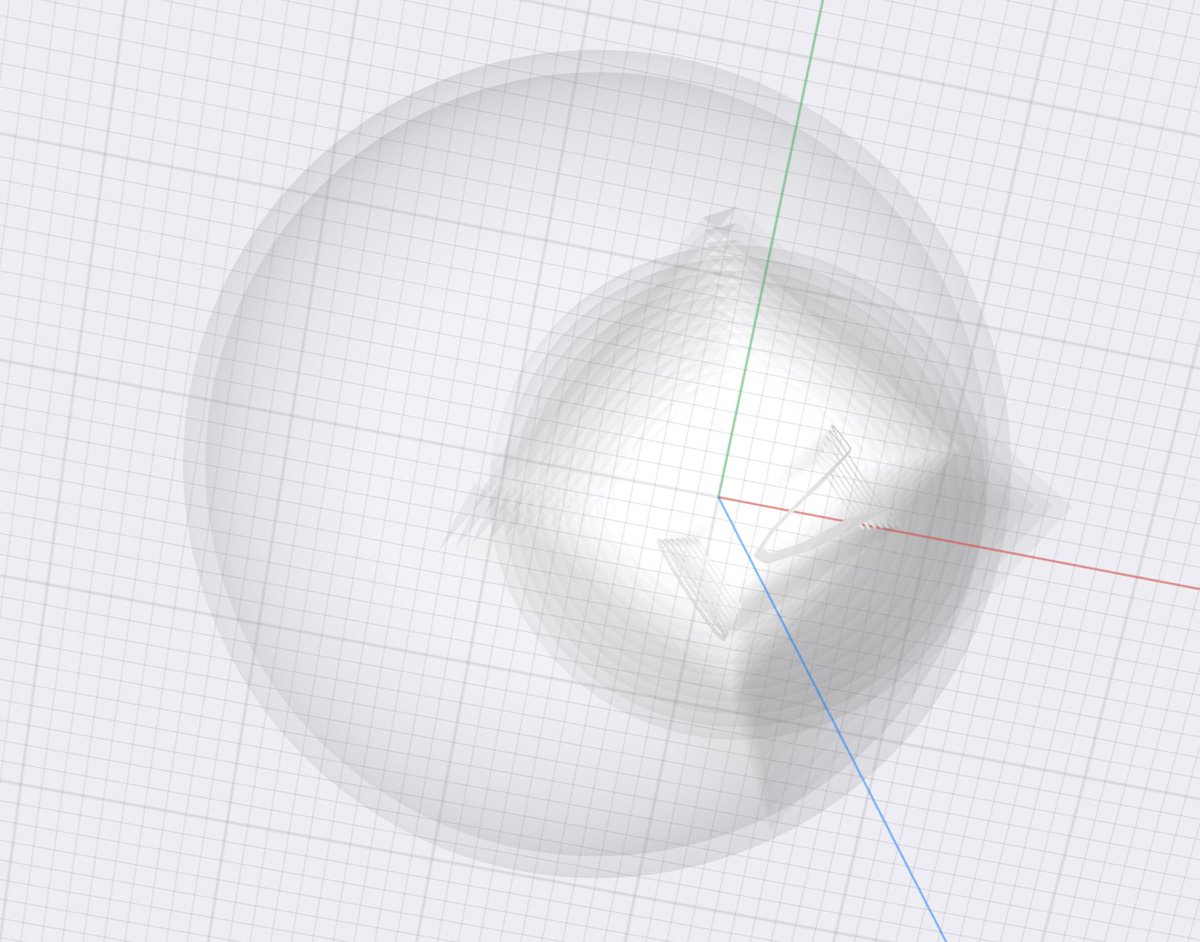
Spirograph
Ring/BankA geometric drawing toy where a rotating element (rotor) moves against a fixed element (stator), generating precise mathematical patterns. The Bank Schema typically functions as the rotor, while the Union Set often instantiates at discrete Ringframes near the dynamic touch point between rotor and stator interfaces. Consciousness often employs Cone, Cylinder, or Sphere type Spirograph dynamics. First image generated at Spiralator.

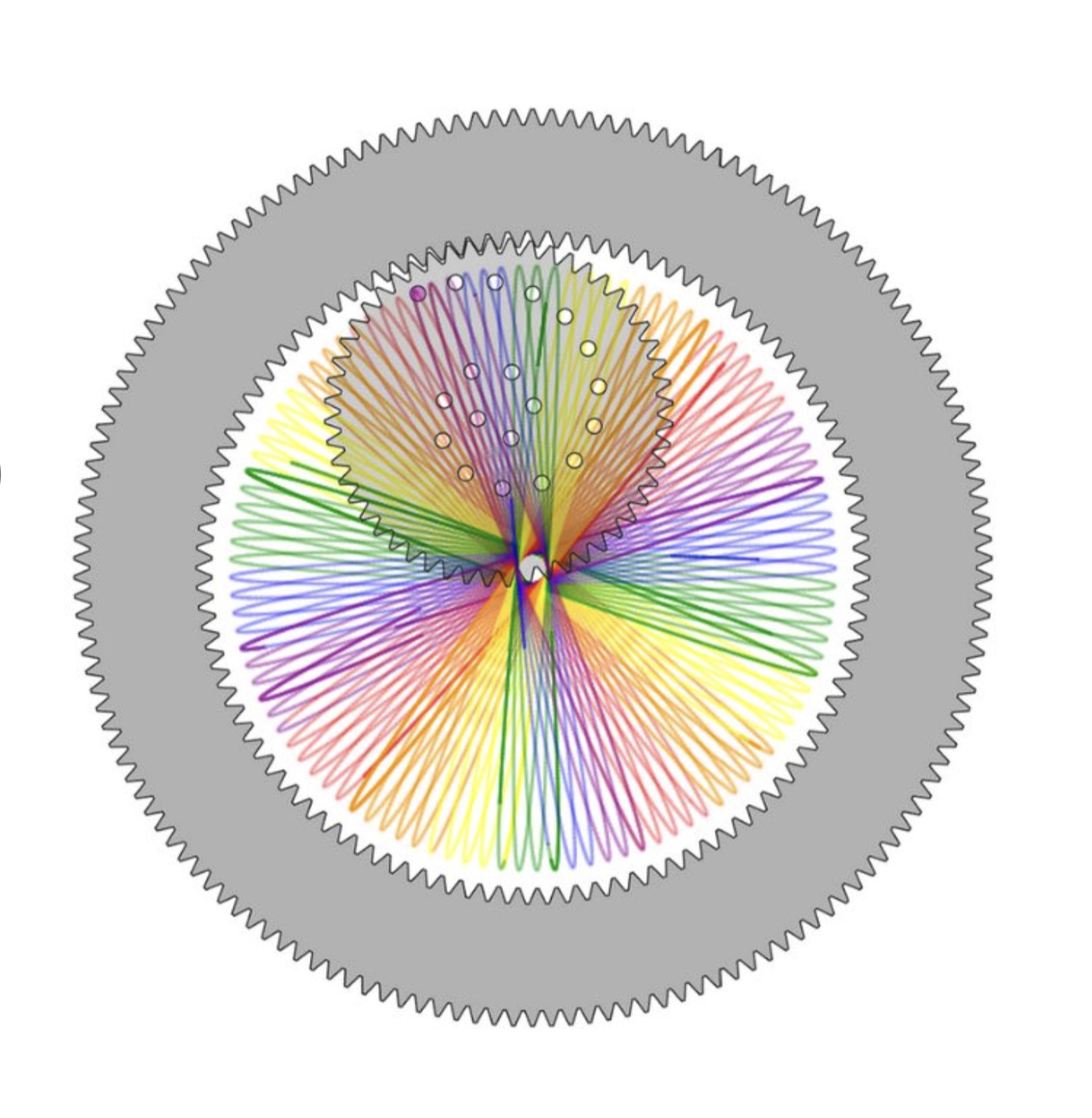
Picture Frame Rings
Ring/BankAn example of Ringframe behavior that is not very ring-like. I adopted the term 'rings' prior to realizing what all shapes they can take on. In this example, Phasic Mode is going on (0–360º around the square), and a Union Set tilted tracer (shaped like a lawn edger blade) follows a square path trajectory, forming 'picture frame' rings. Allowing history impingement Flow into Time Schema forms a sort of fading square helix. The blue line/tracer depiction is offset from the ringframes only for visualization purposes.
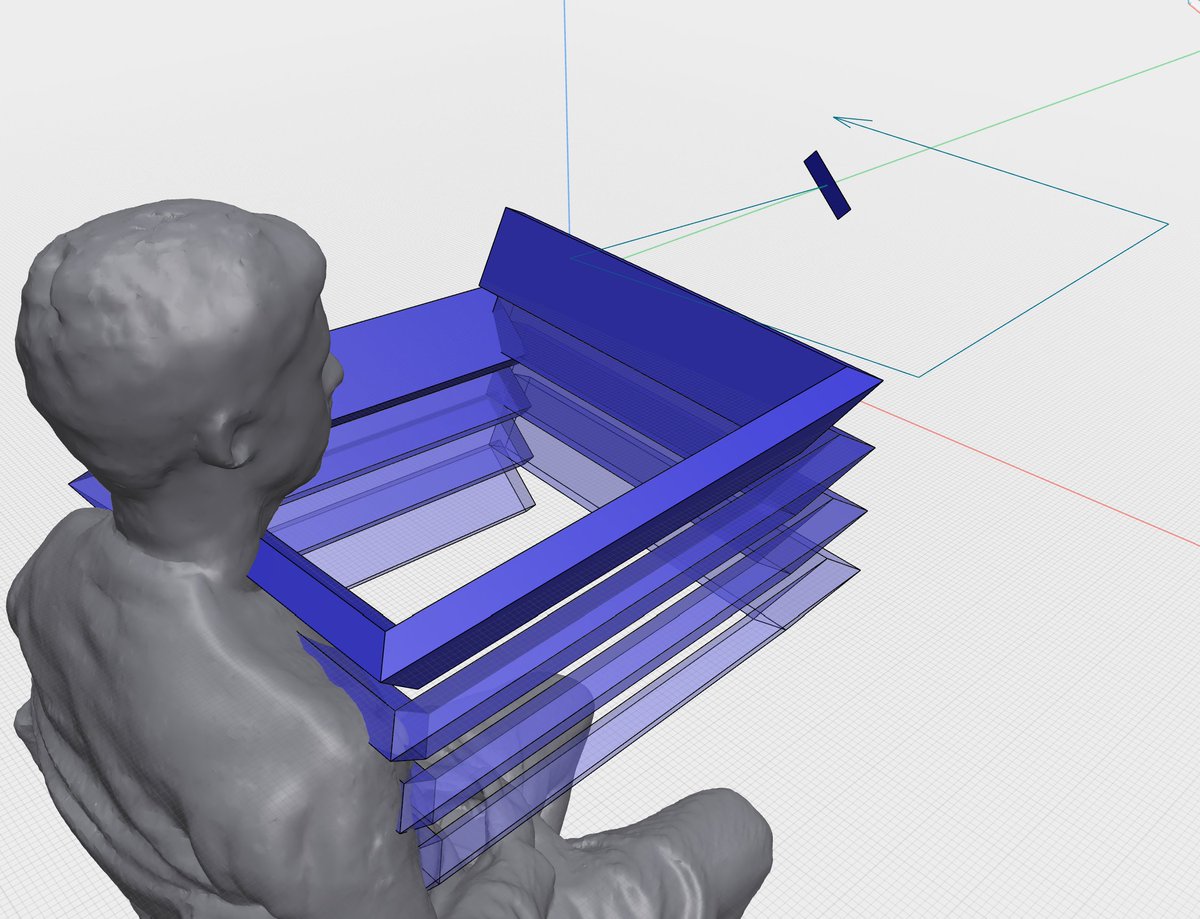
Phase Saccades
Ring/BankPhase Saccades are deliberate, effortful jumps of attention that propel consciousness against the natural gradient of Phase Flow. While Phase Flow represents the spontaneous, relaxation-driven drift between perceptual states (whether far→near, bottom→top, or any phenomenological axis), Phase Saccades require cognitive energy to transition against the prevailing direction—whether moving to distant regions or reversing course by any amount.
This dynamic creates a navigation system where attention moves between quantized perceptual states called ringframes: flowing effortlessly along natural gradients or making intentional leaps against them.
Consider the 2D image below, left. It is bistable, as it could be interpreted to a far or near pop-out to 3D. In such a case, the brain may instantiate a flow from far (high potential) to near (low potential) state. Refreshing to a higher level requires an effortful saccadic jump. By saccade is not meant anything with the eyes, but rather with the location of attention. In ring/bank theory, you (phenomenal) don't have eyes and you aren't a body (unless attention goes there) (in physical world, you have a body and eyes, they are not directly observable), at least you are more directly a series of ringframes, and even more directly you are the physical neural activity encoding those ringframes. So, the phase-saccades are as embodied as regular saccades. Relaxation carries you from the far to the near in quantized steps (~100 ms each Ringframe), effortful phase-saccades are required to jump back further or all the way to the origin farthest ringframe.
Phase saccades tend to occur in Interrupt Mode rather than Phasic Mode, which might be confusing. We are talking about two different kinds of phase.
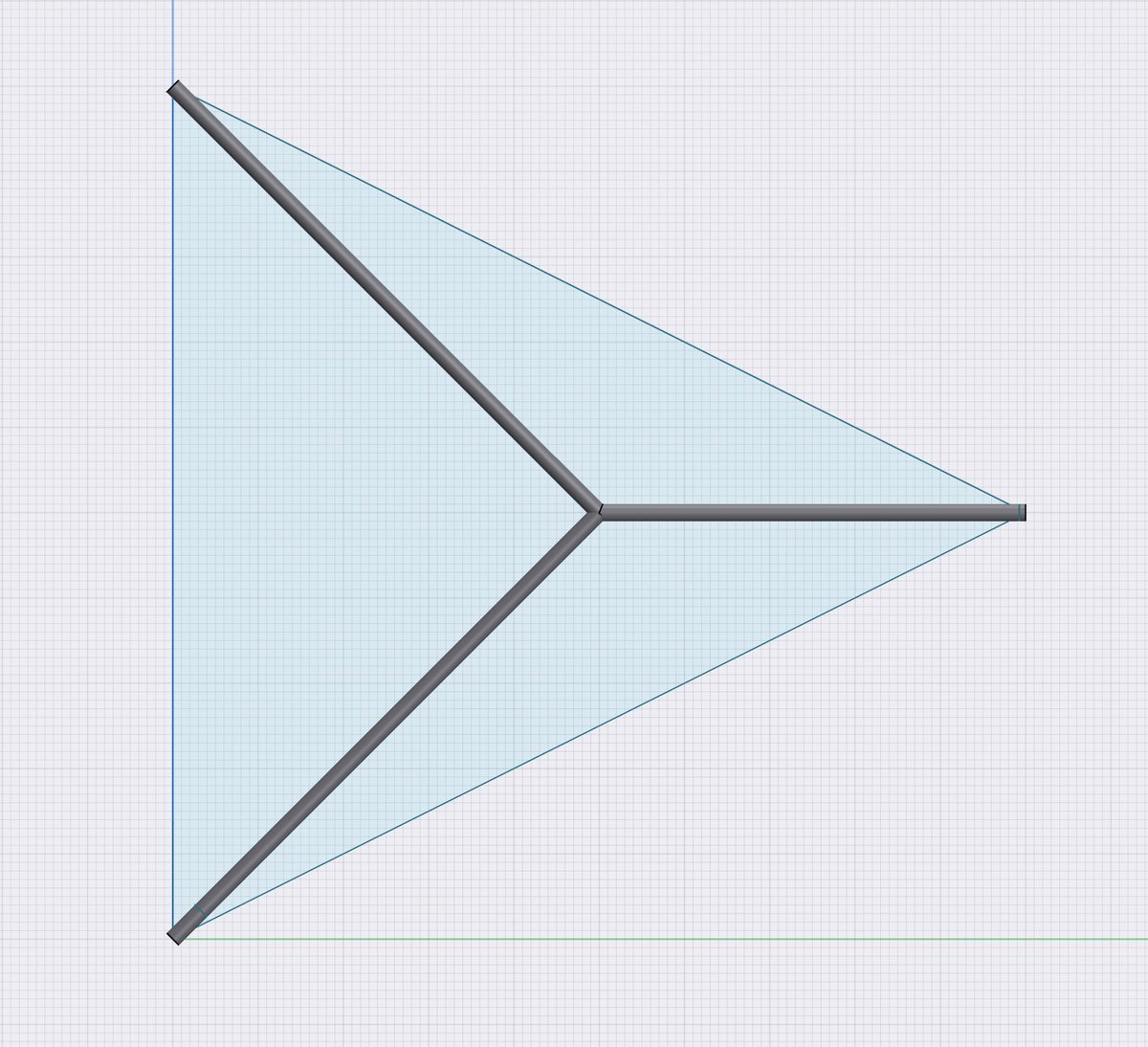
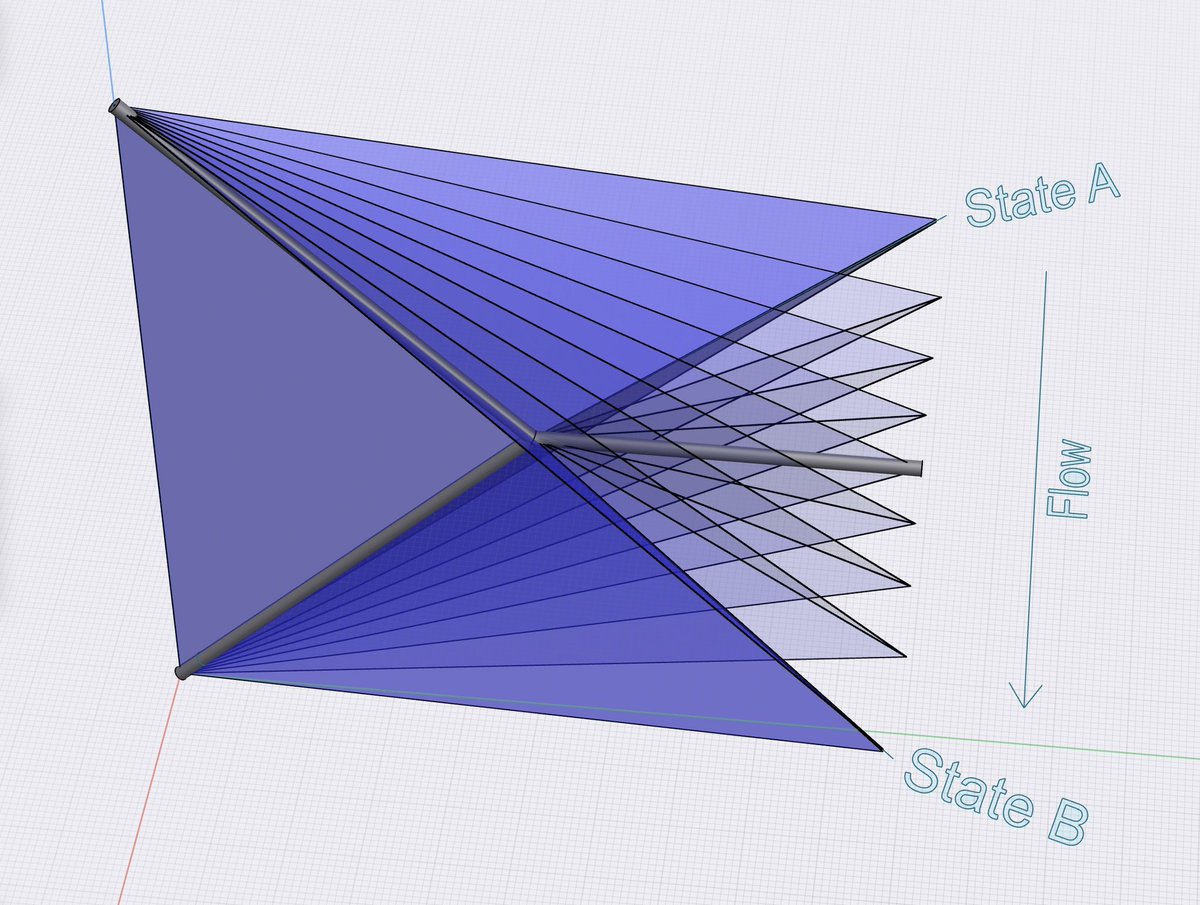
Time Division Spatial Addressing—Linear
Video Ring/Bank DynamicsA system that divides worldsim volume via discrete Ringframes at specific, linearly-sequential phase-locations (often spaced 100–200 ms apart in a 1–2 second cycle, but variable). Like the video's vertical circles lighting up sequentially along a body, bright frames give each spatial location its moment of attention, while dark frames (not shown here, could be above or below the body) create the return path—forming a toroidal cycle that repeats continuously.
The division of 1-2 second chunks into these phase-keyframes ensures different schema regions take turns: not every location accesses attention simultaneously. Same concept as TDMA, but for competing spaces rather than conceptual voices.
Time Division Spatial Addressing—Revolving
Video Ring/Bank DynamicsThe division of worldsim volume via discrete Ringframes at specific, 0–2π phase-locations (often spaced 100-200ms apart in a 1–2 second cycle, but variable).
Bright Ringframe
Ring/BankA ringframe printed with full conscious Paint content—the geometric instant where attention actively renders sensory or conceptual information into the worldsim.
Bright ringframes occur during active attention phases, carrying the primary geometric payload of conscious experience as vision, thought, or other mic/conceptual voices get spatially instantiated in schemas.
Dark Ringframe
Ring/BankA low-opacity ringframe printed with minimal Paint content. A series of these near-transparent manifolds can provide a spatial and temporal reset from the end of one bright phase to the start of another.
Dark ringframes occur during passive attention phases, and create the transitional intervals that enable attention to cycle back to starting positions, maintaining the rhythmic structure of consciousness while carrying minimal experiential content.
AGU—Anti Gravity Up
Ring/BankA conceptual vector in real/imaginal schemas denoting the up direction. When dealing with multiple schemas, it is useful for partially understanding the relative 3D orientation of two schema volumes that are not 3D-Parallel.
Gaze Vector
Ring/BankA conceptual vector from the Cyclopean Eye of the Avatar to the foveal object which gaze is fixed upon. Alternatively, a conceptual vector from the mind's eye to the foveal object which gaze is fixed upon.
HCU—Head Crown Up
Ring/BankA conceptual vector from the superior point of the head upwards, where up is defined from head coordinates (e.g. the line going from under chin up through the topmost point of head and continuing on), which is often different from Anti-Gravity Up.
Avatar
Ring/BankThe body schema.
What you think is your real body, but is actually the brain's model of the physical body (the physical body, and the Noumenal [Physical] realm in general, cannot be directly observed).
Phenomenal, Immanuel Kant
Immanuel KantIn Kant's philosophy, the phenomenal realm is the world as it appears to us, structured and organized by the categories of our human mind (e.g., space, time, and causality). It is the world of our sensory experience and empirical knowledge, and it is the only world we can directly perceive and understand.
Noumenal, Immanuel Kant
Immanuel KantIn Kant's philosophy, the noumenal realm is the world of “things-in-themselves,” existing independently of our perception. It is a reality that is unknowable and inaccessible to human reason and sensory experience. While we cannot have direct knowledge of the noumenal, Kant argued that it must exist as the source of our phenomenal experience. Ring/bank thinking fully embraces this distinction, calling the noumenal realm the actual physical universe, which is not directly observable.
A Priori vs. A Posteriori
Immanuel KantIn Kantian epistemology, knowledge is distinguished by how it is acquired. “A priori” knowledge is gained independently of experience, such as the truths of logic and mathematics. “A posteriori” knowledge, by contrast, is derived from empirical observation and experience, such as scientific findings.
FM-PCA
MathFrequency modulation principle component analysis. The FM (frequency modulation) term is added to clarify the basis of many PCA studies. A task may be repeated several times and averaged to obtain a fairly clean firing frequency of a neuron at each time point of the trial. Z-scoring and sometimes log are applied to the datapoints prior to running PCA to rotate the n-dimensioned coordinates such that dimension 1:n will align with and order maximal variance of the tracer.
AM-PCA
MathAmplitude modulation principle component analysis. The AM (amplitude modulation) term is added to clarify the basis of a few studies by Brad Caldwell. Complex Morlet Wavelet convolution (or other method) is used to convert time series data (say, from EEG channels) to time-frequency data (amplitude or power of each frequency band). Rather than having n individual neuron dimensions, it has n channel dimensions (number of electrodes), and generally looks at the entire cortex's LFP (local field potential). Initial tests showed ring behavior sometimes arising part-way into song-listening, with rings at a steady 5.15 Hz.
Local Field Potential (LFP)
NeuroscienceThe bulk voltage fluctuations recorded from the brain's extracellular space, reflecting the synchronized activity of thousands or millions of neurons in a local area. It primarily captures the aggregate of dendritic currents and synaptic activity, rather than the sharp action potentials of individual neurons. The Local Field Potential is a key measure in systems neuroscience for observing mesoscopic neural dynamics, particularly the brain's collective oscillatory rhythms.
Earl Miller
PersonAn American neuroscientist from MIT who is a leading voice in the study of brain waves. While many in the field have traditionally viewed brain waves as a mere byproduct of neural activity—like the exhaust from an engine—Miller has argued that they are, in fact, the brain’s fundamental language of communication. His research demonstrates how different frequency bands (such as gamma, beta, and alpha waves) work together to control cognitive functions like attention and working memory. According to his theory, gamma waves package information while slower beta waves provide a top-down signal, acting as a “director” to gate and prioritize information. His work suggests that a true understanding of cognition requires a deeper appreciation for how these rhythmic oscillations may orchestrate cognition.
Stuart Hameroff
PersonAn American anesthesiologist and philosopher of science best known for his work with physicist Roger Penrose. Together, they developed the Orchestrated Objective Reduction (Orch-OR) theory of consciousness. The theory proposes that consciousness is not a product of classical computation within neurons but arises from quantum gravity effects within protein structures called microtubules inside neurons. According to Orch-OR, consciousness results from “orchestrated” quantum collapses within these structures, making it a phenomenon that is both non-computational and fundamentally linked to the physical laws of the universe. He is also a prominent figure in the field for his role in organizing and hosting the Science of Consciousness conferences, which have become a major international forum for discussing the nature of conscious experience.
Shamil Chandaria
Person Predictive ProcessingA philosopher and researcher working at the intersection of neuroscience, artificial intelligence, and consciousness studies. Chandaria is known for his clear explanations of the Free Energy Principle and Predictive Processing framework, particularly how these theories provide a unified account of brain function, perception, and consciousness. His work emphasizes how the brain minimizes surprise (free energy) through hierarchical predictive models, and how this process underlies both conscious experience and intelligent behavior.
His presentations and writings explore how predictive coding mechanisms create our subjective reality through continuous Bayesian inference, offering a mathematically rigorous foundation for understanding the mind-brain relationship.
Principal Component Analysis (PCA)
MathA statistical technique used to simplify complex, high-dimensional data by reducing it to a few key dimensions, called “principal components.” The goal of PCA is to find the directions in the data that account for the most variance. By transforming the data onto these new axes, a researcher can visualize and analyze the most important patterns and relationships, often revealing underlying structure that would be hidden in the original high-dimensional space. PCA is widely used in neuroscience to analyze neural population data and understand how a group of neurons collectively encodes information.
Transcendental Idealism
Immanuel KantThis is Kant's central philosophical position. It states that our knowledge of the world is based on our sensory experience (the “idealism” part) but that the structure of that experience is determined by the innate, organizing principles of our mind (the “transcendental” part). It posits that we can only know things as they appear to us, not as they are in themselves.
Voxel
Ring/BankThe equivalent of a pixel, but for volumes (VOlume piXEL).
1. As a phone screen has individual pixels as the smallest color divisions, one could think of schemas as having individual, near-infinitesimally small cubes, as the smallest or finest color or form detail in our experience. For example, the physical universe has Planck length and Planck time much finer resolution than our worldsim. What the limits of the worldsim's resolution are may not be a hard voxel-type limit, but it is a useful concept for discussion.
2. Confusingly, neuroscience/LLMs rush to assume a 'voxel' always means the tiny spatial cube of resolution in an fMRI or MRI scan. Though related, this is of little interest to ring/bank discussion of voxels.
Cyclopean Eye
Ring/BankIn ring/bank thinking, Environment Schema can be subdivided into Left Eye Environment Schema and Right Eye Environment Schema. These are two 3D volumes of the world, as understood from each eye's unique location and unique gaze vector. The two volumes are rotated (about a line 1D-parallel with Head Crown Up, and going through the Foveal Gaze Voxel [at focal plane], such that the pupil of the two eyes is brought to an average location, just above the nose, and slightly behind it. This cyclopean eye results into a doubled environment schema, with a range of crossed and uncrossed disparities from foveal gaze voxel going closer and farther from focal plane, respectively. It also fuses the left eye gaze vector and right eye gaze vector into a single cyclopean gaze vector. This is why, when you hold your index finger to your nose, and focus in the distance, the single finger splits into two and crosses a large distance.
Environment Schema
Ring/BankThe Real Schema can be divided into the Environment Schema and the Body Schema (see Avatar). The environment schema is everything in your brain's model of reality that has your body stripped out. When you walk down a trail, the environment schema must move relative to your body schema.
Ringframe
Ring/BankA Ring (0-1D manifold) or Frame (2D manifold) incomplete interpretation of a mic voice event.
Dimensionality Jump
Ring/BankA transition between Phasic Mode and Interrupt Mode of the Union Set (current Ringframe) in Time Schema characterized by temporal compression of the active printing phase. During this jump, the 360° phase completion time shrinks from 100-200 ms down to nearly 0 ms over several cycles, while the overall ring-to-ring interval remains fixed. This creates an increasing "silence gap"—the inter-ring duration grows from 0 ms to 100-200 ms as the active printing accelerates, effectively redistributing time from content generation to emptiness while maintaining the same fundamental temporal rhythm. Theoretically, jumping dimensionality up and then back down could allow for reversal of phase direction (going counter clockwise rather than clockwise), though this has not been explicitly observed.
Finally an illustration of *dimensionality jump.* At fourth ring, switches from 0D point tracer (phasic rings) to 1D ring printhead (instant ring), then drops back down to phasic rings after that.
— Brad Caldwell (@Caldwbr) October 21, 2024
This illustration is subpar, but this concept has been incredibly hard to code for… pic.twitter.com/pC9qmBTZY9
Straight Line 'Ring'
Video Ring/BankRings have exceptions. They can occasionally be a line (as demonstrated below), and open U, and open V, etc. It is the same 'material' and behavior as a ring, but not in a ring-like shape.
Skewers
Ring/BankRadial memory structures in bank space where multiple instances of the same content type stack along the time dimension, with current instances at the outermost radius and historical instances progressing inward toward the origin. The bank's apparent 3D organization masks higher-dimensional sorting where content types cluster along additional axes.
Example: The "dad opening kitchen door" skewer contains every instance of that specific event, stacked radially with recent occurrences at large radius and childhood memories near the center. When this pattern activates, you see the entire historical stack simultaneously—the current door opening printed against the backdrop of thousands of previous openings.
The letter 'b' skewer works similarly: all 'b's ever written organize radially, with your current 'b' following the pre-carved geometric pathway through this stack. The fact you only access 'b' content when writing 'b' suggests additional sorting dimensions—like content type or semantic category—that function as automatic routing keys.
For "dad gum it," the skewer contains every utterance across your lifetime, each instance storing not just the phonemes but the emotional context, vocal inflection, and situational framing. Current usage rides this pre-carved emotional pathway—the printing follows the existing rut rather than computing the phrase anew, which explains why certain expressions carry accumulated emotional weight.
Skewers represent cached computation pathways: frequently used patterns get physically encoded as preferred trajectories, making recurrent operations efficient but constraining variation. The radial time-stacking allows momentary overview of a concept's entire evolutionary history when the ring prints near that coordinate in bank space.
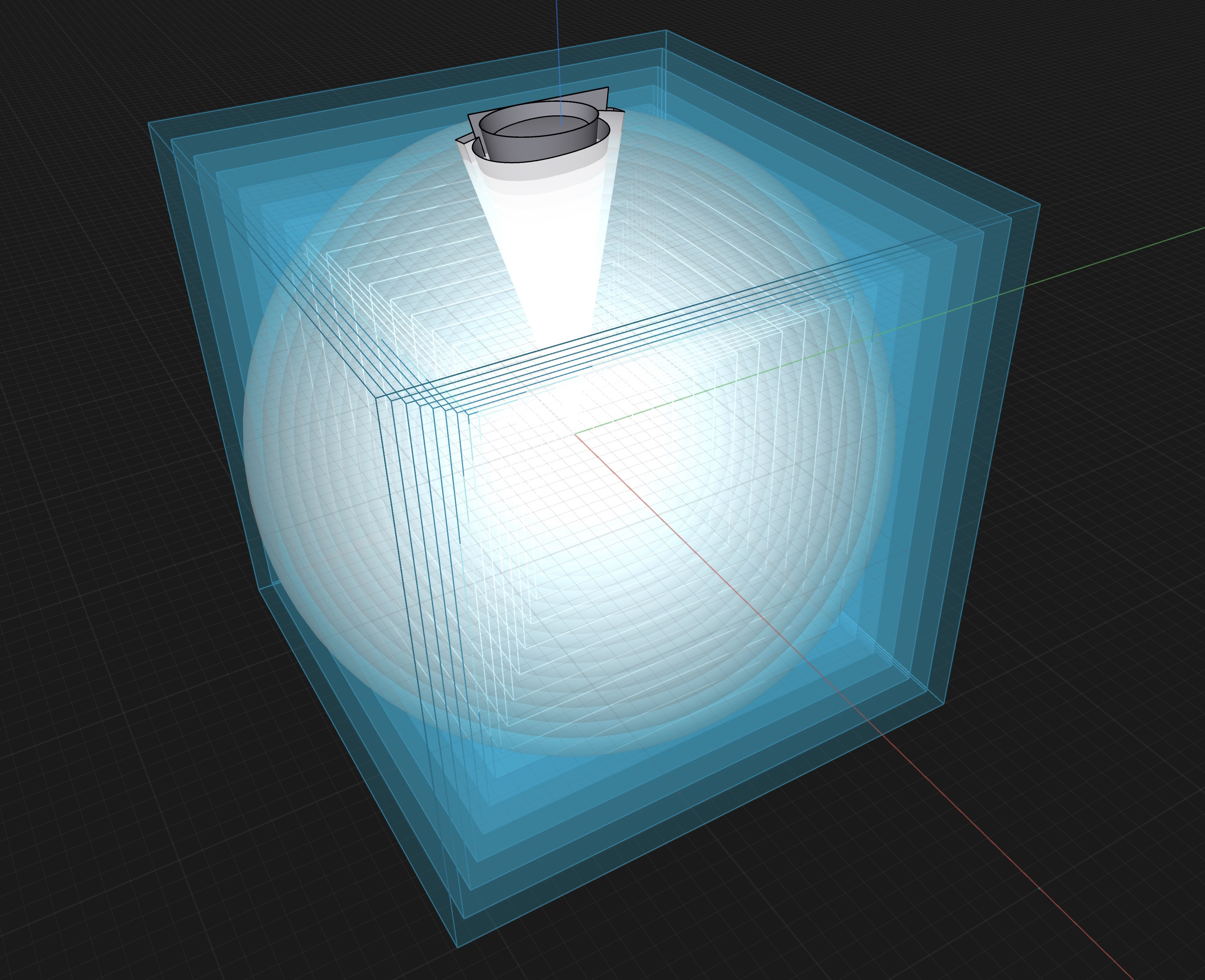
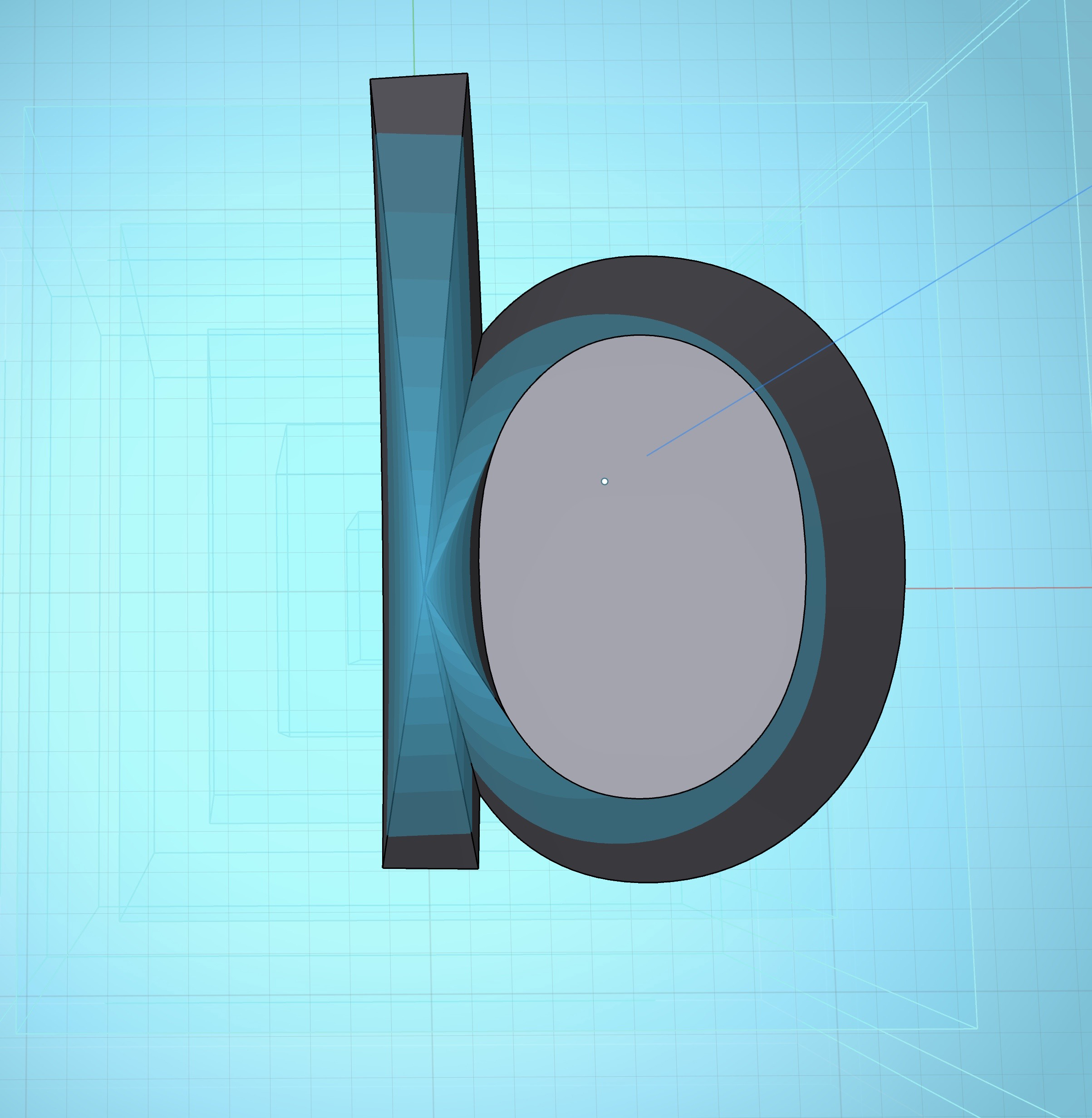
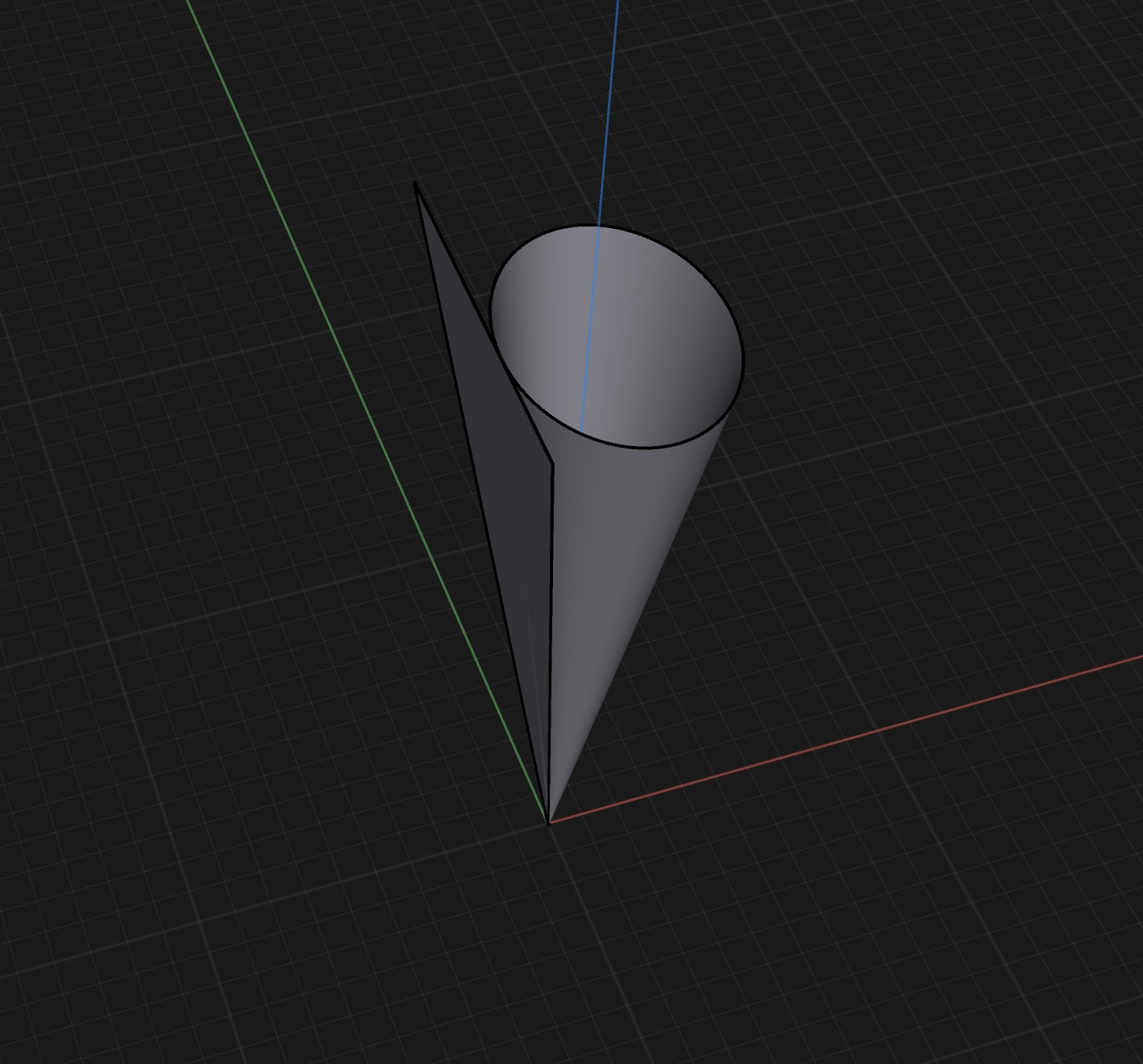
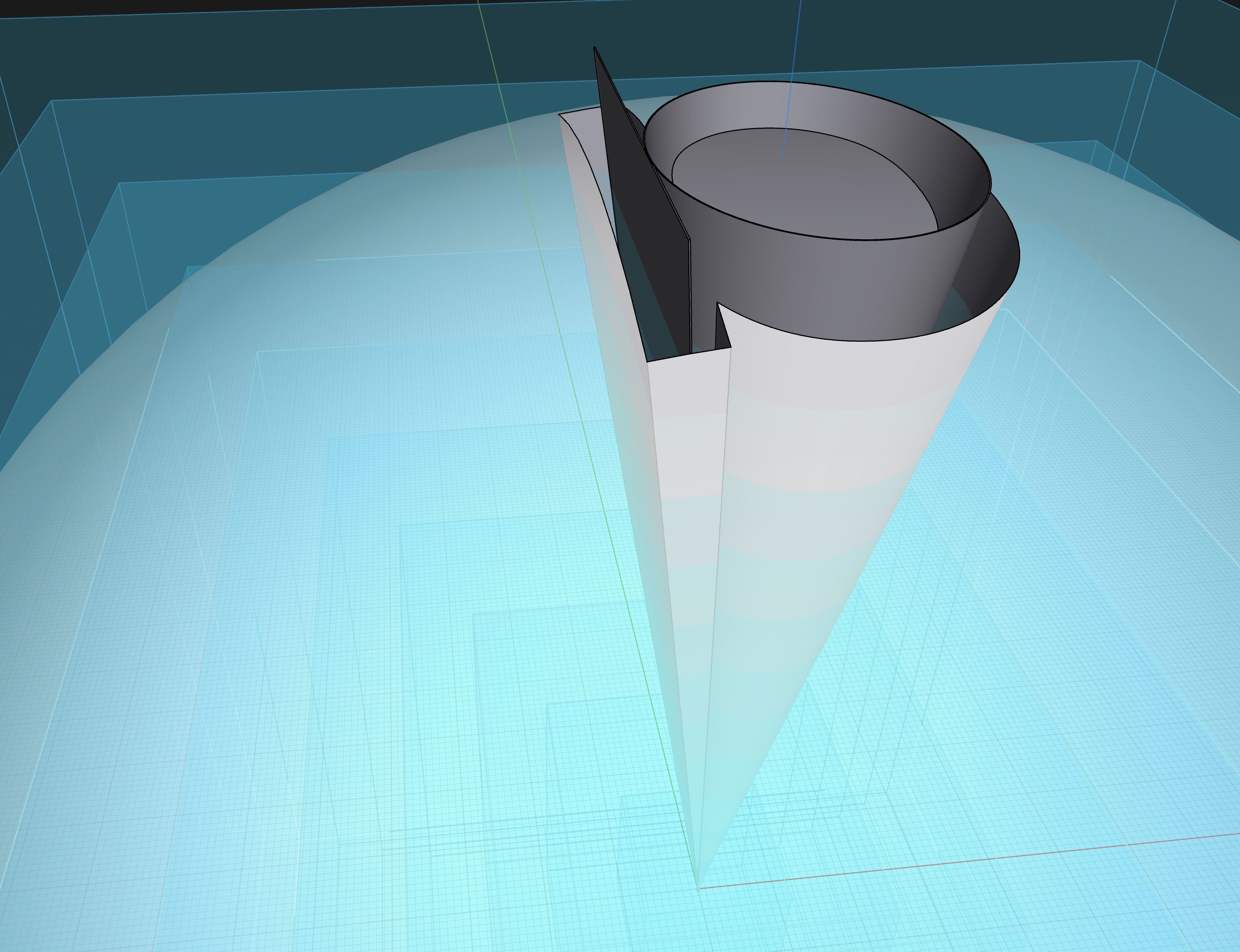
Phase Flow (A Form of Walk [of Bank])
Ring/BankThe quantized advance of the union set (current ringframe) across a discrete landscape of possible locations and shapes in worldsim space. When the system remains relaxed, the union set will click forward to the next available spatial slot—each with defined dimensional properties.
Example: You might see ten identical chunks arranged from right to left, each measuring 1" thick × 4' tall × 4' deep, spaced 6" apart. The union set assumes these exact dimensions and advances in discrete steps from the rightmost slot toward the leftmost slot. Each position is visibly predetermined—like giant piano keys in space—where conscious attention will land if you remain passive.
Phase flow operates in interrupt mode, advancing the union set's spatial configuration in quantum jumps rather than continuous motion. The available target positions are constrained and discrete—you're clicking between predefined spatial waypoints, each with fixed dimensional properties that the union set must adopt.
To move backward or skip positions requires a phase saccade against the natural gradient. The progression can follow two patterns: either it jumps instantly (via a large Phase Saccade) from the final position back to the first (like a video loop), or it rotates behind (or above/below) and eventually comes back to the right side, taking a repeatable torus or giant ring path.
Frame Displacement Principle
Ring/BankThe mechanism by which each new union set avoids printing in the same spatial-temporal position as the previous one. Displacement can occur through one of three mechanisms:
- Bank Walk: The Bank itself translates across real or imaginal schema, shifting the printhead to a new site for the next frame. Phase Flow is a specific use case of Bank Walk in which the path is orbital or repeating in some other way.
- Self-Motion (Hiking): The environment schema moves oppositely—ground or surroundings scroll backward—to generate relative motion for the next frame.
- Kickout (Flow): Prior frames are ejected downstream through the time schema, freeing print space for new ones.
Together these ensure continuous updating of the worldsim without frame pileup. Below, bank walk, self-motion, and artificial kickout (flow) are depicted, respectively.
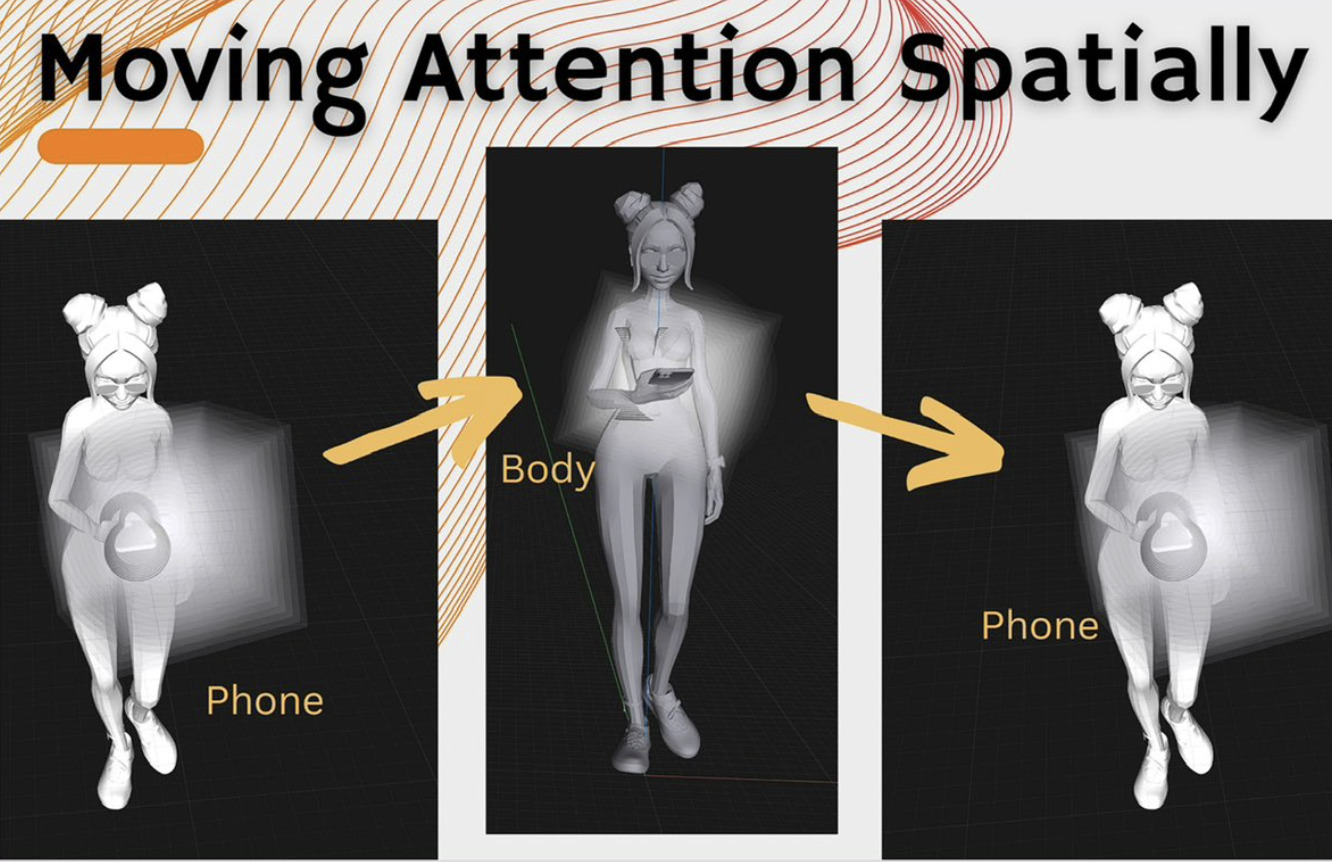
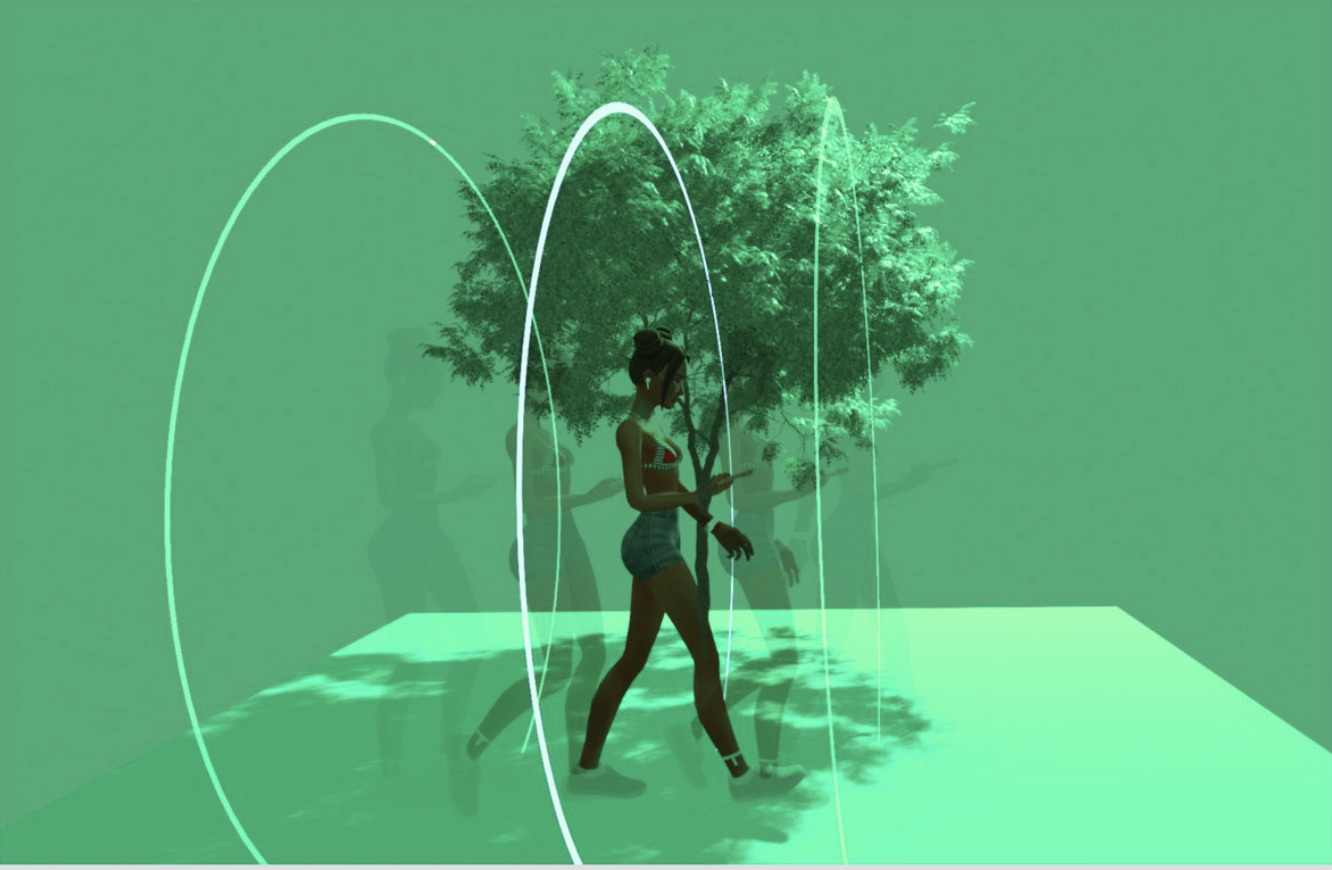
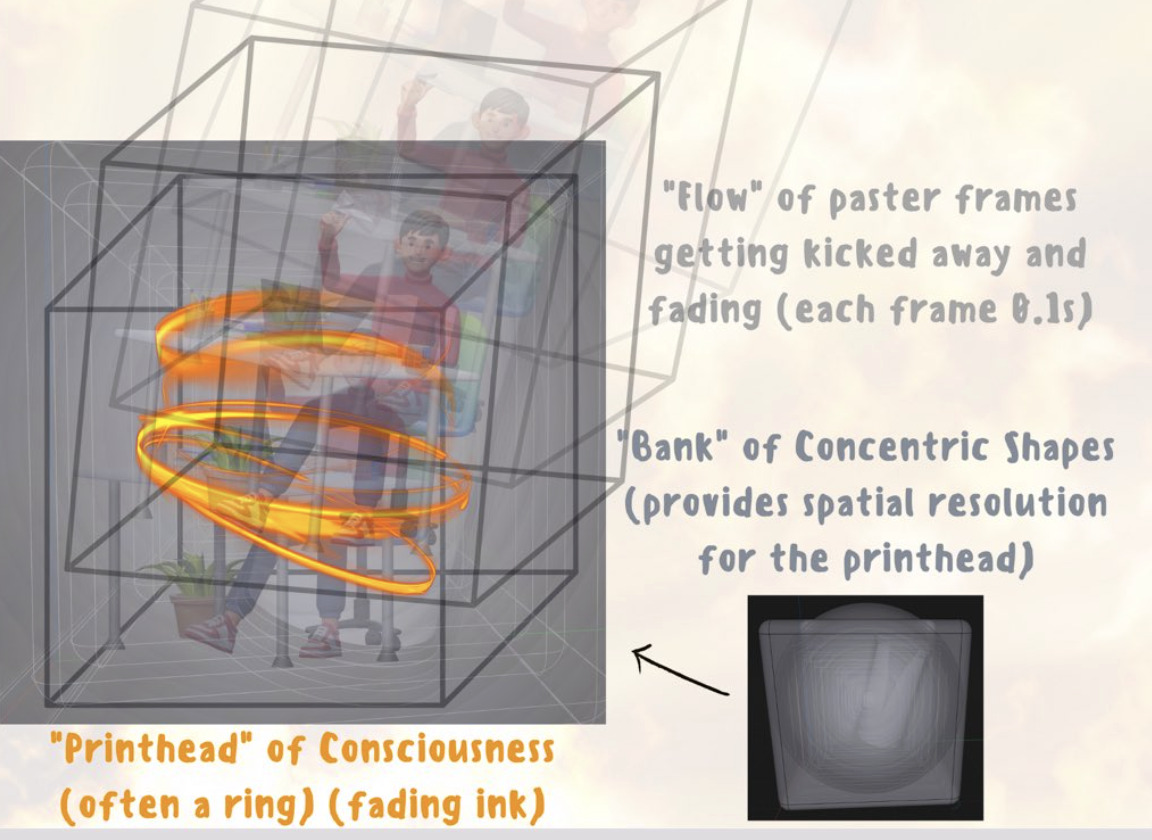
Dynamic Frequency Rings
Ring/BankThe printing of Rings in Time Schema can be periodic or aperiodic, depending somewhat on the stimulus.
When periodic, the frequency can be dynamic (changing), as below. As a further distinction, the printing of rings need not always be rhythmic–rings often print to salient events such as notes in music or random noises, which may be aperiodic. In general, the print of a ring tends to create a bit of a refractory period just after it. Quiet and high frequency stimuli (such as music and scent) can overcome this refractory period since the initial ring print does not use as much reservoir.
Flow Deformation
Ring/BankIt is possible for a deformed region in Time Schema volume to temporarily arise, such that rings printed as usual, after flowing, hit a region that deforms their shape.
Phasic Mode
Ring/BankA continuous printing mode in Time Schema where a 0D tracer follows a periodic trajectory—either moving around a ring repeatedly or having a 1D radial arm sweep around continuously (or having a 2D frame sweep around a torus). This generates helical or corkscrew-like structures when combined with the temporal "flow" of printed content while the printhead remains stationary. In Phasic Mode, printing occurs as uninterrupted cyclic motion rather than discrete frames, creating smooth temporal extensions like helices (from ring trajectories) or spiral staircases (from radial sweeps).
Bank Printing Rings
Ring/BankExample of Bank Schema printing Rings into Time Schema.
Orbital Strike
Ring/BankDefinition: The high-energy flash that occurs when the revolving Bank, carrying inertial momentum in modeling space, drives its active print plane through the visual field—a two-dimensional perceptual plane typically situated about one foot in front of the observer. The intersection releases built-up kinetic energy as a brief, self-luminous event—the Strike—that re-prints or refreshes the visual field before the next rotation.
Geometry: The Bank (as a set of concentric cube/sphere/cylinder shells) rotates as a single structure within modeling space. A selected surface plane P moves with that rotation. When P aligns with and passes through the visual-field plane F, an Orbital Strike occurs. Brightness corresponds to the Bank’s rotational inertia and precision of plane–field alignment. One Strike marks each full revolution of the Bank (≈4–13 Hz typical).
Dynamics: Between Strikes, rotational energy accumulates. At the moment of intersection, that energy discharges into the visual-field plane as a sharply bounded flash that cuts through the perceptual sheet yet continues unbroken beyond it, leaving a freshly stabilized worldsim in its wake.
Manifestations:
• Abortive Wave — a single Strike wipes a fading after-image following eye closure.
• Kasina Breakdown — rhythmic Strikes (~13 Hz) create one bright flash per revolution; intra-cycle frames remain dim.
• Visual Refresh — slower Strikes (~4–10 Hz) maintain perceptual continuity through recurrent re-printing.
Phenomenology: Experienced as a luminous plane of energy sweeping through the visual field about one foot in front of the face. Each flash is discrete, instantaneous, and self-contained—the perceptual heartbeat of the Bank’s revolution.
The Kasina Breakdown is demoed below (should be in white ideally). This same basic process of a plane orbitting and cyclically striking through a visual field plane holds true for the Abortive Wave and sometimes for Visual Refresh.
Abortive Wave
Ring/BankShortly after closing the eyes, if timing aligns closely with the next Orbital Strike, the event becomes visible as an Abortive Wave. The visual field still holds a decaying afterimage or iconic memory when the Strike lands, so instead of refreshing the external scene, the Bank forcefully prints to blackness. The flash wipes the lingering image in a near instant—revealing that the Bank’s rotation and strike rhythm continue unbroken, even without external input.
Kasina Breakdown
Ring/BankA strobe-entrained sequence of Orbital Strikes (~8-13 Hz) where the Bank’s rotation phase-locks to the external light. If flash and revolution are at 13 Hz, dark cards (dark ringframes) might be printed at 100-200 Hz in-between the strikes.
Visual Refresh
Ring/BankVisual refresh seems to often be done by an ongoing rhythm of Orbital Strikes (usually estimated around 4–10 Hz) that sustains ordinary perception. Each Strike re-prints the visual-field plane with updated content, maintaining a stable visual field as the Bank revolves. When it is done well, we don't notice the still-frame nature, and instead believe it rendered continuously.
It seems possible to force the refresh rate to the upper bound of the Flicker Fusion Frequency (FFF), which for me is 40 Hz. Some flashes just below this rate can still be resolved, while lights flashing at 41 Hz appear steady. This likely reflects a perceptual fusion limit—the rate beyond which successive Orbital Strikes are no longer individually resolved—not necessarily the absolute maximum rotation rate of the Bank itself.
Observed modes of Bank operation suggest three main duty-cycle regimes of printing behavior:
- Interrupt Mode (~1% duty): The standard Orbital Strike pattern—brief, high-energy flashes separated by mostly passive or dark ringframes.
- Phased Mode (Clustered (4-6% actual duty [40-60% apparent duty]) / Zigzag (22-26% actual duty [40-60% apparent duty])):
A modulated pattern where printing occurs in bursts across multiple ringframes per orbit. There is a nesting of two duty cycle, an 'on' phase over entire orbit of 40-60%. But this 'on' isn't actually continually on. If you zoom in closer, it is composed of a nested on-off pattern. For a card model, there may be 6 active cards (each 1 ms followed by 99 ms of off) followed by 4 passive or dark cards (again, each 1 ms followed by 99 ms off, but the 1 ms is very faint during dark portion). For zigzags in photic drive, there may be 100 bright ringframes (zigzag lines) printed over a half second, followed by a dark return path of 100 ringframes too dark to see. Again, zooming in on the half second of 'on,' there may be gaps of 'off' between each line, although color seems to exude from between them in the photic drive example.
- Clustered Variant (~4–6% total duty, concentrated within 40–60% of each cycle): Staggered partial prints across 4–6 consecutive ringframes.
- Zigzag / Chevron Variant (~22-26% total duty, concentrated within 40–60% of each cycle): Seen in Kasina Breakdown; the Bank lays down continuous spirographic or chevron-like traces, with short silent intervals between active printing phases.
- Standing Mode (~100% duty): The Bank halts orbit/motion/rotation and “3D-prints” explicit voxels of experience directly into modeling space, bypassing the 2-D visual field entirely.
These regimes reveal the flexibility of the Bank’s printing behavior—from discrete impact refresh to sustained or stationary generation of perceptual content—suggesting that consciousness may dynamically shift its duty cycle to balance stability, clarity, and frame rate.
Phase Gradient Waves
NeuroscienceUncertain purpose, demonstrated below from direct recording of human hippocampus.
Interrupt Mode
Ring/BankA discrete printing mode in Time Schema characterized by burst-printing of complete spatial manifolds followed by temporal gaps. In this mode, the system prints an entire 1D manifold ring then pauses (e.g., for 100ms) before printing the next ring, or prints a complete 2D manifold frame followed by a temporal interval before the next frame. This creates a staccato-like temporal structure where mic voice events manifest as discrete "snapshots" or "frames" separated by brief interruptions (highlighting only salient events in the mic voice, such as alignment with a heartbeat), contrasting with the continuous mic signal of Phasic Mode.
2D-Parallel/3D-Parallel
Ring/BankWe are familiar with (1D) parallel lines. Planes can also be 2D-parallel, and 3D schema volumes can be 3D-parallel. The term 'coplanar' sounds like it would mean 2D-parallel, but it actually refers to points sharing a single common plane.
Homoscaler/Heteroscaler
Ring/BankEqual or different volumetric scale between two schemas.
Blueprints and advertisements could be “to scale” (life-sized) or “not to scale.” A 2D blueprint can be drawn such that 1/4" on the printed paper represents 1' of actual distance. Imaginal schema is often not 'to scale' relative to real schema (it is usually enlarged, such that 1' = 1"). If you imagine bending your toe, you may get mental imagery, where the toe is 1' as it overlays real schema. We know a toe in reality is about 1". In this example, the scale of imaginal:real is 1 cubic foot = 1 cubic inch. In those cases where two schemas are equal scale, they are homoscalar. Where they are different volumetric scales, they are heteroscaler.
Mic (TDMA, IRQ)
Ring/BankThe mic is an underappreciated concept in consciousness study, and it represents the conscious timestamping and most incipient conscious processing/awareness of any stimulus event. Stunningly, there is never any echo or phase-mismatch in perception for events. They seem to occur once, in perfect ordering and spacing. One can observe that further interpretation of these events has quite variable latency (5–500 ms), yet the varying interpretation lag never muddles the time record system of Time Schema. There is an ongoing tracking of a flowing window or buffer. The mic is critical to ring/bank theory.
Attention rapidly (2-4 Hz) changes what it is listens to/hears/focuses on. The mic has a rapid gatekeeper or Mic Bouncer, rapidly switching who gets the mic. That is, there is a rapid (1–4 Hz) switch of its input source to a different part of the brain (or more broadly, rapidly changing the attended thing that gets to voice its amplitude modulations briefly). The brain takes turns listening to different sensory streams (visual, auditory, somatic, insular mood, etc.), giving each a brief moment of access to a central processing unit. This is an interrupt-style processing system akin to a computer's Interrupt Request (IRQ) or Time-Division Multiple Access (TDMA), where different processes are handled in a rapid cycle.
This mechanism allows differing modes or types of things to be the input to conscious attention and to reification to worldsim. An auditory voice (playing a song on car radio) leads to faint 3D mental imagery of the players or of the concepts discussed in the song. There is already decent evidence that this occurs in the Pulvinar of rats–that a series of neural bursts can magically change from being 'about' (and locking to timing of) air puffs to whiskers, to being 'about' (and locking to timing of) cyclic changes in visual field.
Mic Bouncer
Ring/BankJust as bars have bouncers determining who gets in, the conscious mic has a bouncer that rapidly (1–4 times per second) removes whoever (whatever mode or thing) is speaking and replaces them with another voice. For example, I may attend to the voice of typing on this Macbook keyboard. Then it begins raining or hailing, and that voice grabs the mic. Then I notice my leg bouncing. Then I notice my hunger. This is the rapid, real-time switching of voice. It is all-or-none. Certainly, the worldsim continues to float in most cases, but the mic of attended events seems to be monotoned, only capable of looking at one kind of amplitude modulation patterning at a time.
Incommensurable
Ring/BankUnmappable.
Because worldsim is of type utilizable-meaning, the geometry therein cannot be located relative to the geometry of the physical world it is modeling.
This principle might not destroy materialistic theories, as arrangements of matter could stand in to direct output 'as if' the encoded thing were the real thing.
The Middle Earth of Lord of the Rings is incommensurable with the history of the actual Earth, since one is of type fictional-story, and the other of type physical-reality.
Bank Schema (Shape Schema)
Ring/BankThe print and record head of consciousness—both generating spatial experience and storing the geometric patterns that shape attention.
Stroboscopic Operation:
The Bank Schema constantly transforms beneath awareness, only visible during "strobe" photographs (loud, bursty mic events during sedation) that capture its current state—position, orientation, scale, and geometric configuration.
Each strobe-printed ringframe (which can include a faint print of much of the bank) persists 500-1000ms while fading, creating overlapping windows that reveal the Bank's motion between illuminations.
Core Mechanism:
Operates as consciousness's 3D Etch-a-Sketch, printing static geometric snapshots (ringframes) that can immediately flow in Time Schema. The tracer can be 0D (point), 1D (ring), or 2D (frame), but motion is never printed—only static instantiations from the Bank's shape library.
The bank can be in front of you, it can be inside you (e.g., if your attention is on your lung), it can lock to your head, it can lock to your hand during tool use, etc.
Print/Record Function:
Each printed shape simultaneously records itself deeper into the Bank, creating self-reinforcing attention patterns. This dual-action mechanism means consciousness literally writes its own geometric habits through the act of attention.
Geometric Foundation:
The Bank is organized around a sphere centroid that serves as the universal scaling reference. All shapes scale relative to this point while maintaining their individual positions:
- Primary Structures: Concentric sphere and cube shells form the Bank's backbone
- Strong Spin-Lock: Broken drinking glass (right-offset, 15° clockwise tilt, break forward)
- Secondary Anchors: Pyramid hat (atop cubes) and slanted leg (below) provide additional orientation cues
Spin-Lock Necessity:
Without asymmetric anchors, symmetric shapes would create perceptual ambiguity: spheres allow infinite rotations, cubes allow six. The broken glass enforces singular orientation, making coherent spatial framing possible.
Possible Mechanism for Bank Revelation:
During hyperpolarized states (sedation), sparse coding in retrosplenial cortex layer 5 may fail. Burst firing could recruit excessive ensembles, causing each ringframe to print both its primary content AND the entire 3D Bank structure. This might create extended periods where consciousness witnesses its own geometric foundation—the sphere and cube shells prominently visible, all scaling relative to the sphere centroid.
Beyond Geometry:
While the Bank handles spatial representation, consciousness includes non-geometric elements like emotions—which function as abstract behavioral filters in concept space rather than geometric forms.
Q&A:
How does the Bank represent complex real-world shapes?
It doesn't replicate visual detail. The Bank prints the attended shape union set—the geometric interface between schemas. When attending to fine details, the Bank typically uses radial scaling (see Skewers) rather than high-resolution replication.
Ultimately, the Bank Schema reveals the geometric aspect of consciousness—a print/record system where attention both generates and is shaped by spatial patterns.
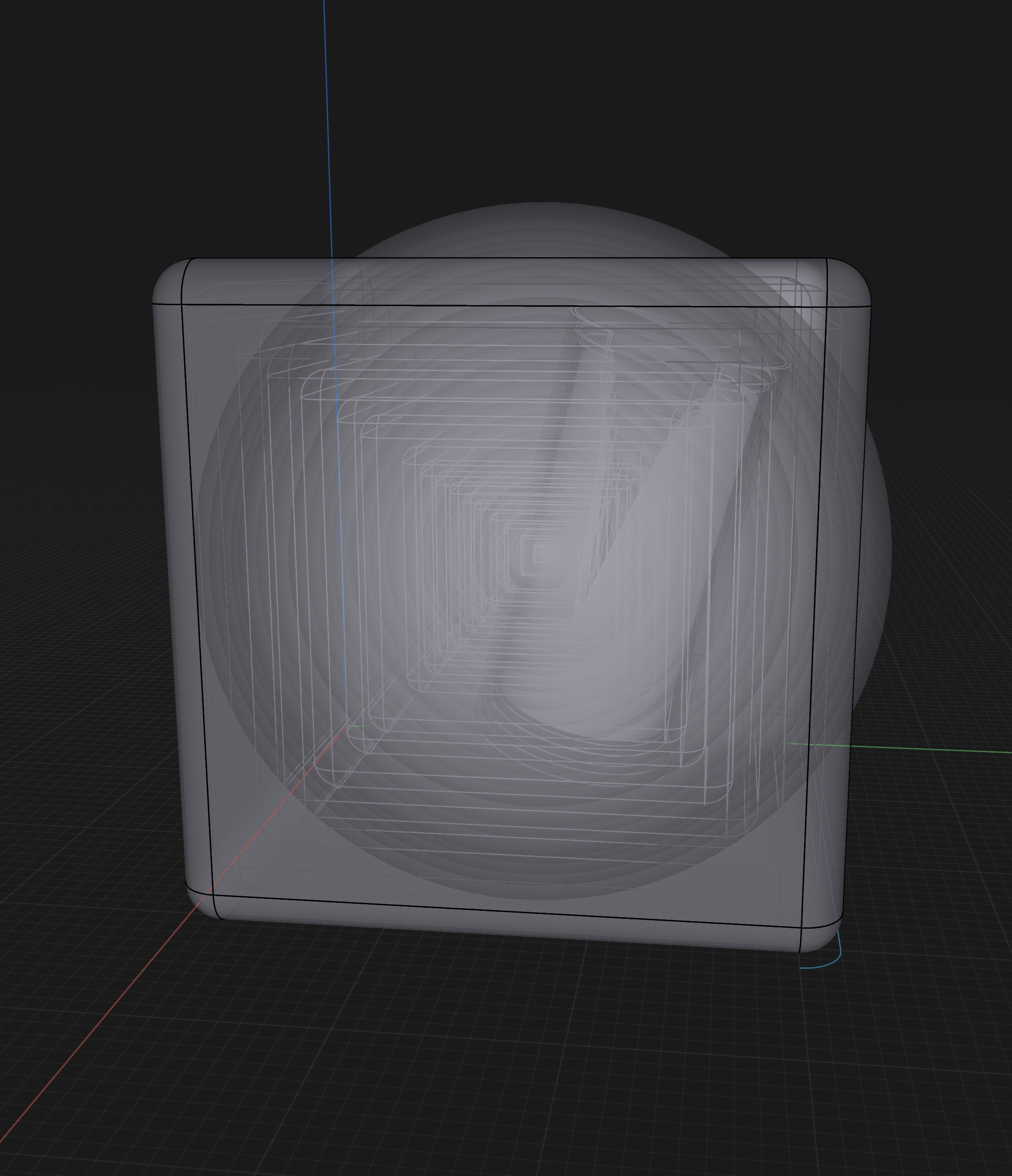
Schema
Ring/Bank1. A useful grouping of information; e.g., all information pertaining to your car is a your-car-schema.
2. A (3D) volume of congruent worldsim; e.g., real schema fits in a single 3D volume. A single spin-up of imaginal schema also fits into a single 3D volume, but as it is non-veridical to real schema, it must overlay that volume in a fairly happenstantial and possibly heteroscaled manner.
There are four typical schemas in ring/bank theory: Real Schema, Imaginal Schema, Time Schema, and Shape Schema (the last is also called Bank Schema). The first two schemas (real and imaginal) are sometimes also referred to as Paint.
Paint
Ring/BankThe meaningful content that floats or remains utilizable and perceptually visible as long as there is an ongoing complete (successful), low-latency interpretation of the mic voice events (and possibly also subconscious information) into reified posterior (experience). Paint 'floats' when the brain is operating optimally. In sedation, sleep deprivation, and traumatic events, a heightened burst mode may be entered globally by the cortex, which seems to result in an inability to fully inflate or interpret Inputs to Posteriors, using Priors. In this mode where the buffer is exceeded, or latency of interpretation is too great, the paint can 'cease to float,' whereby one gets Paint Anesthesia—the loss of the 3D volume of experience.
As paint requires a view and a viewer, a simple rough understanding of paint is that it is Perspective, as opposed to mere Physics-modeling (In Blender animations, one must first set up the physics of the scene and any keyframed movements of the objects; then, one must also set a camera and any camera movement keyframes for shooting the perspective impingment of that 4D (3D+Time) physics playout upon a camera). However, paint is both the physics-playout and the perspective impingment onto the avatar's/mind's eye's visual field; it also includes the complex meanings of auditory, somatic, and conceptual contributions as well. So, paint is omnimodal. Ringframes are a physics-playout model, and they have to 'scratch-to-reveal' the paint: the physics-playout model of content and of the avatar's perspective viewing it.
When paint floats, an Avatar or Mind's Eye must also float or be rendered.
CMW—Cartoon Motor World
Ring/BankA first term coined to describe a volume of non-veridical or imaginal worldsim. See also Imaginal Schema.
SPW—Sensory Physical World
Ring/BankA first term coined to describe the volume of veridical or real worldsim. See also Real Schema.
Union Set
Ring/BankThe Union Set is a 0-2D manifold that serves as the current cross-schema registration interface between four independent 3D coordinate systems (real, imaginal, time, and shape schemas).
Mechanically: It functions as attention's dynamic binding mechanism that establishes momentary isometry between schemas by forcing alignment of their local coordinate frames around the attended object or region.
Operationally: When attention selects a target, the Union Set computes and maintains a temporary rigid transformation matrix that maps all four schema coordinate systems to a common reference frame centered on the attended element.
Dynamically: As attention moves or the attended object transforms, the Union Set updates this transformation matrix in real-time, causing counter-rotations and translations of entire schema volumes relative to each other to preserve the current binding.
Historically: Previous Union Sets decompose into separate memory traces along geodesic paths determined by the accumulated transformation differentials between successive attention frames.
In the head-turn example: The Union Set establishes head-centered coordinates at t=0. During imagined rotation, it computes the minimal counter-rotation of the imaginal schema needed to maintain head-alignment, generating the observed leftward displacement of the previous frame's imaginal component as a direct consequence of this transformation calculus.
Below, the four main schemas (real, imaginal, shape, time) are depicted alongside their present moment union set (1D ring manifold in this case, depicted in blue here).
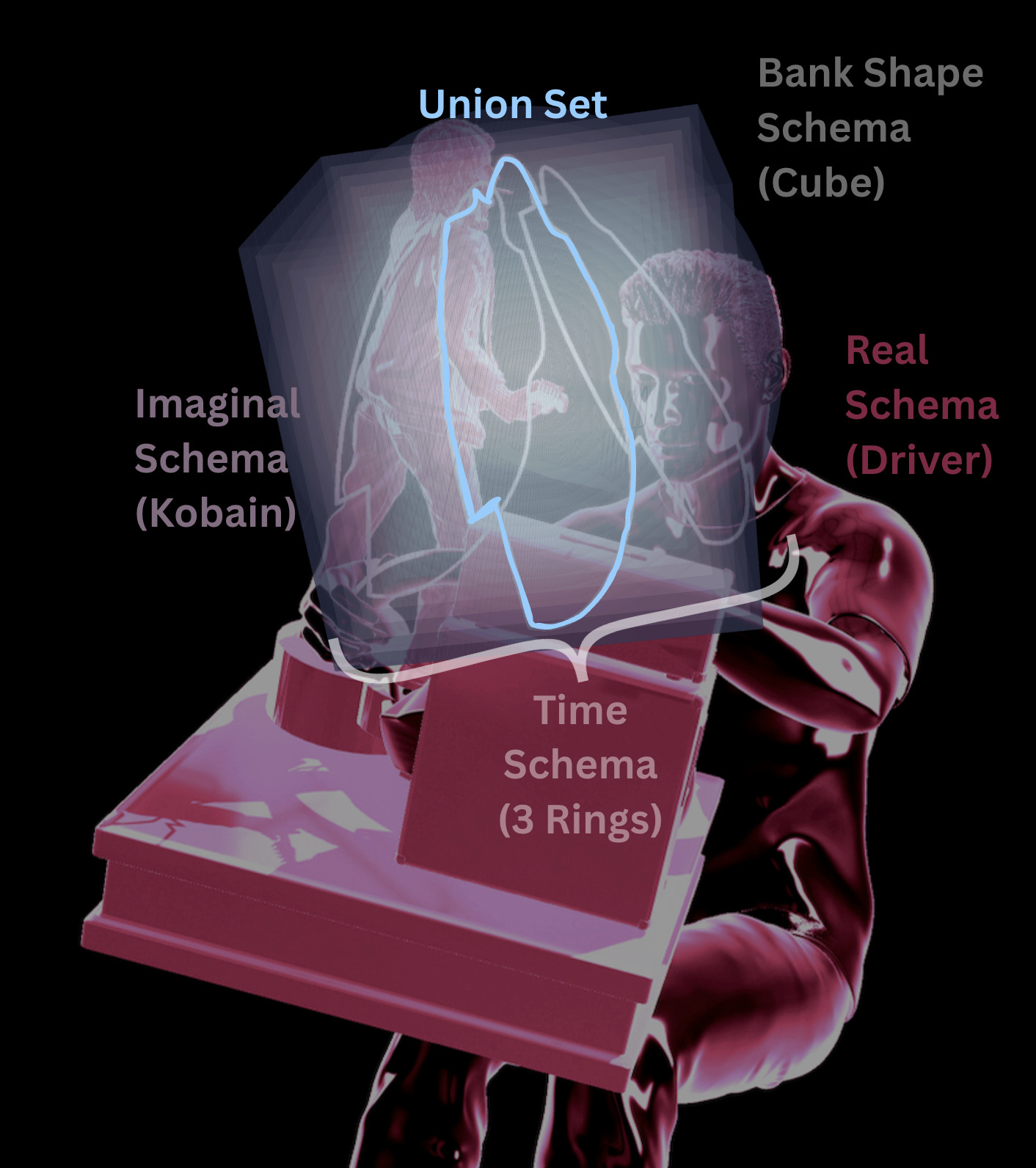
Specialty Injected Frame (SIF)
Ring/BankDefinition: A single, out-of-band preempt frame that injects a tagged payload (memory cue, scene shard, action thought) and then immediately returns scheduling to the prior stream (typically Real). The SIF itself does not pin or hold selection beyond that one frame.
Mechanism: A high-salience tag stack (emotion/novelty/self) wins one frame of priority, prints its payload, and drops. Foreground selection resumes as before; meanwhile a metacognitive loop begins to reverberate on the injected content (see Tag Echo).
Phenomenology: A crisp “snap-in” moment (smell/name/flash) followed by immediate return to the scene, while the mind keeps thinking about the injected thing in the background.
Example: Driving and smelling cedar → one frame slams in a childhood porch. Vision immediately returns to the road, but you find yourself mulling that porch for the next minute.
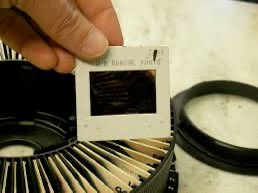
Phase Weave
Ring/BankDefinition: An interleaved selection regime where a 0D tracer advances along one geometric path while alternating schema instantiations (e.g., Real then Imaginal, voxel by voxel). The experience can fuse into one stream when paint bandwidth is high and handoff latency is low; under load it reveals itself as a braid (micro-flicker/tearing).
Injection Echo (Metacognitive Afterthought)
Ring/BankDefinition: The lingering thought-about-it process that follows a Specialty Injected Frame. Not continued selection of the injected manifold, but a reverberation in concept/DMN/working-memory driven by its tags.
Role: Biases idea flow, word choice, and memory search for several seconds while foreground selection continues refreshing Real. Feels like “I’m back here, but my head is still on that thing.”
Notes: Strength scales with tag density and recent event debt; decays unless refreshed by another voiced frame referencing the same tag.
Paint Anesthesia
Ring/BankFull anesthesia results in the loss of conscious experience of time, or of events, or of the sense of self. Paint anesthesia is the partial loss of one component of consciousness—the full 3D volumetric experience. In paint anesthesia, time, events (with amplitude), and possibly ringframes are still experienced, and the volumetric worldsim paint can often be deduced from the limited touchpoints, but is not explicitly rendered (is not perceptually visible). Paint anesthesia shows up occasionally in sedation and in heavy sedation.
Throw
Ring/BankThe continuous deformation and restoration of the Bank Schema's (and the Union Set's) coordinate alignment with the Real Schema during acceleration profiles, where the displacement and return dynamics precisely mirror the force application curve.
Mechanically: The Bank Schema doesn't simply jump to an offset position and snap back. It undergoes smooth deformation—the coordinate transformation between Bank and Real schemas follows the exact acceleration profile, including the jerk (derivative of acceleration) that determines how smoothly or abruptly forces are applied.
In the car turn example: As the steering wheel turns left, the Bank Schema's rightward displacement follows the steering input's smoothness. A gentle turn produces gradual coordinate deformation; a jerky turn creates abrupt transformation changes. The return to equilibrium similarly mirrors the steering wheel's return dynamics—the Bank Schema "unwinds" along the same temporal profile as the force removal.
This reveals that the brain implements a full dynamic system: The coordinate transformation between Bank and Real schemas behaves like a damped spring system where the displacement follows the force input profile in real-time, including higher-order derivatives like jerk.
The qualia of throw therefore contains rich temporal information: You don't just feel "pushed right"—you feel the smoothness of the push, the sustained pressure, and the character of the return. This temporal resolution suggests the brain is implementing something akin to a proportional-integral-derivative (PID) controller for coordinate alignment during acceleration.
This dynamic matching explains why different driving styles feel qualitatively different: A race car's abrupt turns create sharp, high-jerk throw sensations, while a luxury car's smooth turns produce gradual, low-jerk displacements. The Bank Schema isn't just tracking force magnitude—it's tracking the entire force application profile.
The computational implication: The brain maintains a real-time dynamic model of the coordinate transformation between Bank and Real schemas that includes velocity and acceleration terms, not just positional offsets.
Vibes
Ring/BankScaler/positional change qualia.
Changes in amplitude of the mic voice in real time, to encode salient keyframes of peaks/troughs of the amplitude envelope of that voice.
When listening to music, the peaks in intensity sometimes result in ringframes with peaked radial scale. There are many other ways besides radial scale that amplitude envelope peaks gain fitting geometric representation prior to full 3D schema interpretation.
Flow
Ring/BankThe linear or logarithmic continual movement of timestamped ringframes in time schema along the time axis over time. The ringframe is already moving at flow velocity as soon as it is printed (no acceleration needed). The ringframe fades in opacity over roughly 0.1–5 seconds, though it may leave a utilistic impression (memory) for an entire lifetime. Utility (memory) is a lower opacity that falls below perceptual visibility noise gate.
When listening to music, a note ringframe flows quickly (roughly 0.3 m/s) as it fades into past. When walking, earth schema (a part of real schema) may flow backwards relative to body schema at roughly 0.1 m/s. Other qualia may sometimes invoke faster, 1–2 m/s, flow rates. The voxels of a worldsim may be revolvingly refreshed (like a sweeping radar plane forming a donut) at 10+ times a second, resulting in 3–12 m/s movement of the bank printhead.
2D/1D Manifolds
Ring/BankMany think of 2D objects or manifolds as planar. I think of a 2D manifold/object as a surface that appears flat locally. I would consider the skin surface over your entire body to be a 2D manifold for this reason. Yes, it requires a 3D embedding space. Yes, it takes up 3D volume in a sense. But if the manifold itself is 2D or flat-like locally, I consider the entire manifold to be 2D. Thus, frames of consciousness are defined as 2D manifolds in this way, requiring and sometimes taking up a 3D volume to exist. Frames can also be literal 2D planar manifolds though, at times, as well.
This entire principle also applies to 1D manifolds, which I would consider to be a line manifold in a 1D embedding space, or a line or curve manifold in a 2D or 3D embedding space. If the surface is 1D-like at the tiny, local scale, I consider the whole thing 1D. Rings are 1D manifolds in this way, though it is possible for them to require anything from a 1D to a 2D to a 3D embedding space (a ring can be a straight line in very rare cases).
Bioelectricity
Michael LevinThe use of electrical signals and bioelectric patterns to regulate biological processes such as development, regeneration, and cancer suppression.
Morphological Freedom
Michael LevinThe idea that biological forms and functions are not rigidly dictated by a genetic blueprint but can be manipulated and changed through bioelectric and biochemical signals.
Platonic Space
Michael LevinA theoretical space of possible forms and behaviors that living systems can inhabit, suggesting that biological systems are not just physical but also exist as information patterns.
Multiscale Cognition
Michael LevinThe concept that intelligence and problem-solving abilities exist at multiple levels of biological organization, from molecules and cells to tissues and organisms.
Cognitive Light Cone
Michael LevinA theoretical concept that describes the spatiotemporal boundary within which a biological system's goals can be pursued and information can be integrated.
Teleonomy
Michael LevinThe study of goal-directedness in biological systems, which Levin argues is a fundamental property of life that goes beyond simple genetic determinism.
Xenobots
Michael LevinA term for synthetic life forms created from living cells, which exhibit new forms of cognition and problem-solving abilities.
Brad Caldwell
Person Ring/BankOriginator of the Ring/Bank theory (Dynamic Frame Theory), which proposes that consciousness arises dimensionally. The most incipient processing of stimuli* is their “when” and “how much;” with increased processing time (added latency), this intensity signal (mic voice) is interpreted into low-dimensional 0-2D manifold ringframes (“where,” “what shape”), and with further processing (latency), the ringframes “scratch-to-reveal” content voxels which can auto-complete to a full 3D experience schema (“what,” meaning). In normal state consciousness, the entire heirarchy usually occurs with little latency, and ongoing context helps the volume of experience stay afloat and seem continuous.
*These stimuli are not the entire swath of inputs hitting primary cortices; they are a filtered, TDMA Mic which changes Voice roughly 1–4 times a second, and seems capable of millisecond, if not microsecond, resolution, and a large bit depth of intensity variation.
Mark Churchland
PersonA neuroscientist known for his work on how the brain plans and executes movement. His research on the motor cortex of rhesus monkeys during tasks like cyclic hand movements revealed that neural activity evolves in a complex but highly structured way, following a “rotational dynamic.” His work, using techniques such as Principal Component Analysis (PCA), showed that the population of neurons behaves like a dynamical system, generating a predictable neural trajectory that can be visualized as a “ring” in a low-dimensional space. This challenges the older view that individual neurons directly represent muscle commands and instead suggests that movement is generated by an elegant, unified choreography of a large population of neurons. The form of PCA often used by neuroscience could be called FM-PCA (frequency modulation PCA), as it uses the changing frequency of action potentials of single neurons as the axes for PCA consideration. This is in distinction from AM-PCA (amplitude modulation PCA), where variations in amplitude or power of a frequency band are taken as the axes for PCA consideration.
Santiago Ramón y Cajal
PersonA Spanish neuroscientist and pathologist, he is considered the father of modern neuroscience. He was the first person to identify the neuron as the fundamental unit of the nervous system, a discovery that earned him the Nobel Prize in Physiology or Medicine in 1906. His work established the “Neuron Doctrine,” which states that the nervous system is made up of individual cells, laying the groundwork for all future study of the brain.
Wilder Penfield
PersonA pioneering Canadian neurosurgeon, Penfield's research provided groundbreaking insights into the link between the brain and conscious experience. By stimulating different regions of the brains of awake patients during surgery for epilepsy, he was able to map the sensory and motor cortices, revealing how specific brain areas correspond to physical sensations and body movements. His work showed that memories and emotions could be “re-enacted” by stimulating specific parts of the temporal lobe, suggesting that conscious experiences are localized within the brain.
Warren McCulloch
PersonAn American neurophysiologist and cybernetics pioneer, he is best known for his work with Walter Pitts on the computational model of the neuron. He also introduced the concept of “anastomotic processing,” a model of neural networks that contrasts with serial or parallel processing. In this model, information is processed in a tangled, interwoven network where upper layers of the neural net can receive feedback from the lower layers, allowing for the unification of meaning.
Steven Lehar
PersonA cognitive scientist known for his work on the visual system and a geometric model of consciousness. Lehar proposes that conscious experience is a geometric-topological representation of reality, a kind of internal virtual reality created by the brain. His work attempts to explain phenomena like illusions and the nature of qualia by modeling the brain's internal representations. This approach resonates with other dimensional theories, such as the Ring/Bank theory, as both see consciousness as a process of building a structured, dimensional model of the world, rather than a mere collection of disparate neural signals.
Jeff Hawkins
PersonAn American computer engineer, known for his work on artificial intelligence and brain theory. His book “A Thousand Brains: A New Theory of Intelligence” introduces the “Thousand Brains Theory,” which proposes that the brain uses a common algorithm to create a model of the world. This model is based on a hierarchical network of cortical columns, each creating its own complete model of an object or concept. These models are then unified through a voting mechanism to produce a single conscious perception.
Christof Koch
PersonA German-American neuroscientist known for his work on consciousness and for proposing the Integrated Information Theory (IIT) with Giulio Tononi. He has spent his career seeking the neural correlates of consciousness (NCC), which are the minimal neural mechanisms jointly sufficient for any one specific conscious percept. His work has focused on the claustrum, a thin sheet of neurons deep within the brain, as a potential "seat of consciousness."
Francis Crick
PersonA British molecular biologist and neuroscientist, best known for co-discovering the structure of the DNA molecule. In the later part of his career, he turned his attention to neuroscience and consciousness. In his book “The Astonishing Hypothesis: The Scientific Search for the Soul,” he proposed that consciousness can be explained by the physical workings of the brain and that consciousness is a biological problem to be solved.
Giulio Tononi
PersonA neuroscientist and psychiatrist who, along with Christof Koch, proposed the Integrated Information Theory (IIT) of consciousness. IIT postulates that consciousness is a fundamental property of a system that has a high degree of integrated information. It is based on the idea that consciousness corresponds to a system's capacity to integrate information and that it is both “differentiated” (having many states) and “integrated” (the states form a unified whole).
David Chalmers
PersonAn Australian philosopher and cognitive scientist who coined the term “the hard problem of consciousness.” The "hard problem" is the question of why and how we have subjective, qualitative experiences (qualia), which he argues cannot be explained by purely physical processes. This is contrasted with the "easy problems," such as explaining brain function and cognitive abilities, which he believes can be solved through neuroscience.
Daniel Dennett
PersonAn American philosopher and cognitive scientist who has a well-known materialist perspective on consciousness. He argues that there is no "hard problem" of consciousness because there is no non-physical or subjective quality of experience. In his “Multiple Drafts Model,” he proposes that conscious experience is not a single, unified stream but is rather a collection of parallel processes in the brain that create a series of "drafts" of experience.
Antonio Damasio
PersonA Portuguese-American neuroscientist who has focused on the neural basis of emotion and consciousness. He argues that consciousness is not a single, centralized process but is built upon a foundation of basic body sensations and feelings. His work in his book “Descartes’ Error” challenges the traditional mind-body dualism and proposes that emotions and the body's internal state are essential components of conscious experience.
Gerald Edelman
PersonAn American neuroscientist who won the Nobel Prize for his work on the structure of antibodies. He later developed a theory of consciousness called “Neural Darwinism” or the “Theory of Neuronal Group Selection” (TNGS). This theory proposes that the brain creates consciousness through a process similar to natural selection, where certain groups of neurons are selected and strengthened based on their ability to respond to and interpret sensory input from the world.
Roger Penrose
PersonA British mathematical physicist and philosopher of science who has proposed a controversial theory of consciousness based on quantum mechanics. He argues that consciousness is not a product of conventional computation but is instead a result of "orchestrated objective reduction" (Orch-OR), a process that occurs within microtubules inside neurons. This theory suggests that consciousness is non-computable and cannot be fully explained by classical physics.
Bernard Baars
PersonA cognitive neuroscientist and pioneer of the Global Workspace Theory (GWT) of consciousness. He proposed that consciousness arises from a “global workspace” in the brain, a kind of central processing stage where unconscious, specialized brain processors can broadcast information. This theory suggests that conscious attention acts like a spotlight, making certain information available to the entire system for unified, integrated processing.
Michael Graziano
PersonA neuroscientist and psychologist known for his Attention Schema Theory (AST). AST proposes that consciousness is a brain-generated model of attention. The brain constructs a simplified schematic of its own state of attention, and this model is what we experience as consciousness. Graziano argues that we are not “aware” in a mystical sense, but rather that the brain is a machine that builds a simplified, useful model of itself to control behavior.
Anil Seth
PersonA British neuroscientist who studies consciousness and its neural basis. He is a strong proponent of the predictive processing framework, viewing conscious experience as the brain’s best “predictive guess” about the causes of sensory signals. He argues that we don’t passively perceive the world but actively create a controlled hallucination of it based on our internal predictions and prior beliefs.
Susan Blackmore
PersonA British writer and psychologist known for her work on memes, evolutionary theory, and consciousness. She argues that consciousness is a grand illusion, a compelling fiction created by the brain. She is a strong advocate for the idea that there is no single "conscious self" and that our sense of a unified self is a constructed narrative, not a fundamental property of the mind.
Ned Block
PersonAn American philosopher known for his critiques of functionalism and for distinguishing between two types of consciousness. He coined the terms “access consciousness,” which is the ability to use information for reasoning and action, and “phenomenal consciousness,” which is the subjective, experiential aspect of consciousness. He argues that phenomenal consciousness is the true “hard problem.”
John Searle
PersonAn American philosopher known for his “Chinese Room” thought experiment, which is a powerful critique of the idea that artificial intelligence can achieve true understanding. He argues that a computer simply manipulates symbols according to a program without any actual comprehension, a process that is fundamentally different from a conscious human mind that has subjective experiences and genuine intentionality.
Patricia Churchland
PersonA Canadian-American philosopher known as a central figure in eliminative materialism. This view holds that folk psychology, our common-sense understanding of the mind based on concepts like belief and desire, is a flawed theory that will eventually be replaced by a more precise, neuroscientific account. She argues that a complete understanding of consciousness will come from looking at the brain, not by analyzing abstract concepts.
Paul Churchland
PersonA Canadian philosopher and husband of Patricia Churchland, also a proponent of eliminative materialism. He argues that consciousness is a phenomenon of the brain’s ability to represent the world. He suggests that a better understanding of consciousness will come from a new framework based on neural network models, which can better explain how the brain processes and represents information.
Thomas Nagel
PersonAn American philosopher known for his influential paper, “What Is It Like to Be a Bat?” In it, he argues that consciousness has an ineliminable subjective character, and that no amount of objective, physical information about the brain can ever explain what it is like to be a conscious being. His work highlights the “subjective point of view” as the central mystery of consciousness, distinct from physical or functional explanations.
Karl Popper
PersonAn Austrian-British philosopher of science, known for his theory of falsifiability, which states that for a theory to be scientific, it must be possible to prove it false. While not a neuroscientist, his philosophy has influenced many thinkers on the nature of science and the scientific method. He was a dualist who believed that the mind and body are distinct entities that interact with one another.
Karl Deisseroth
PersonAn American neuroscientist who is a pioneer in the field of optogenetics, a revolutionary technique that uses light to control the activity of genetically modified neurons. His work allows scientists to precisely activate or inactivate specific circuits in the brains of living animals, providing unprecedented insight into the neural basis of behavior, emotion, and consciousness.
Noam Chomsky
PersonAn American linguist, philosopher, and political activist who is a key figure in the field of cognitive science. He argues that language is an innate, biological capacity of the human mind, challenging the behaviorist view that language is learned through imitation and reinforcement. His work on “universal grammar” suggests that the mind has a pre-existing structure that governs how we acquire language, a concept that has influenced theories of brain architecture and consciousness.
David Marr
PersonA British neuroscientist and computer scientist who made foundational contributions to the computational understanding of vision. His book “Vision” laid out a three-level framework for understanding information processing systems, including the brain. This framework, which includes the computational, algorithmic, and implementational levels, has been highly influential in both cognitive science and artificial intelligence.
Rodolfo Llinás
PersonA Colombian neuroscientist known for his work on the electrophysiology of neurons and the cerebellum. He developed the theory of “intrinsic oscillations,” which suggests that the brain’s intrinsic electrical activity is the basis for consciousness. He argues that consciousness is a unified sensory experience created by the brain's internal rhythm, not a reaction to external stimuli.
Alva Noë
PersonAn American philosopher who proposes an enactive and embodied view of consciousness. He argues against the idea that consciousness is a purely internal, brain-based phenomenon. Instead, he believes that conscious experience is a form of “skillful activity” that arises from the dynamic interaction between the brain, body, and the environment. We don't just perceive the world; we “enact” it through our actions and movements.
Evan Thompson
PersonA Canadian philosopher and cognitive scientist who has worked to integrate phenomenology (the study of subjective experience) with neuroscience. His work is heavily influenced by the enactive approach, arguing that consciousness is not located in the brain but is a property of the living organism as a whole, shaped by its interactions with the environment.
V.S. Ramachandran
PersonAn Indian-American neuroscientist who has made significant contributions to the fields of behavioral neurology and visual psychophysics. He is best known for his work on phantom limb syndrome, synesthesia, and other neurological conditions. His research on the human brain's remarkable plasticity has provided key insights into how our subjective experience of the body and consciousness can be altered and reshaped.
Oliver Sacks
PersonA British neurologist and writer who popularized the field of clinical neurology by writing fascinating case studies of his patients. His books, such as “The Man Who Mistook His Wife for a Hat,” revealed how brain disorders can dramatically alter a person’s perception, memory, and sense of self. His work emphasized the profound link between brain function and conscious experience in a humanistic and accessible way.
Hubert Dreyfus
PersonAn American philosopher and a prominent critic of artificial intelligence. He argued that the human mind cannot be modeled as a formal, symbolic-processing machine. His work, which was influenced by phenomenology, emphasized the importance of embodied knowledge and skills that are not based on explicit rules, suggesting that true consciousness requires more than just formal computation.
John-Dylan Haynes
PersonA German neuroscientist who conducts research on the neural basis of consciousness and free will. He is famous for his experiments using fMRI to show that the brain’s decision-making process begins several seconds before a person becomes consciously aware of their choice. His work is often cited in debates about whether free will is an illusion and whether conscious decisions are truly free.
Victor Frankl
PersonAn Austrian neurologist, psychiatrist, and Holocaust survivor who developed logotherapy, a school of psychotherapy centered on finding meaning in life. While not a neuroscientist, his work is relevant to the study of consciousness as it explores the highest levels of human experience, including the search for meaning, purpose, and spiritual freedom, even in the face of immense suffering.
S. Zeki
PersonA British neurobiologist known for his work on the visual cortex and for pioneering the field of neuroaesthetics. He has shown that different aspects of vision, such as color and form, are processed by separate areas of the brain. He argues that our subjective, conscious experience of vision is created by the brain’s ability to bring these disparate signals together to form a unified image of the world.
Benjamin Libet
PersonAn American neuroscientist who conducted groundbreaking experiments on the timing of conscious intention and action. He showed that the brain’s neural activity associated with a voluntary movement (the “readiness potential”) begins before a person consciously decides to move. His work has sparked intense debate on the nature of free will and whether conscious decisions are a cause of action or simply an after-the-fact awareness of a decision already made by the brain.
Stanislas Dehaene
PersonA French cognitive neuroscientist who is a leading proponent of the Global Neuronal Workspace Theory (GNWT). He uses advanced brain imaging techniques to study how conscious thought differs from unconscious processing. His research suggests that consciousness is not a single location but a specific brain state where information is widely broadcast across a network of cortical neurons, allowing for a flexible and integrated response.
Anatomical Compiler
Michael LevinThe process by which an organism's body plan is “compiled” from genetic and bioelectric instructions, akin to how a computer program is compiled from code.
Protoconsciousness
Michael LevinA hypothetical form of consciousness or sentience that exists in all living cells, even single-celled organisms, enabling basic goal-seeking behaviors.
Habituation
Michael LevinA simple form of learning where an organism decreases its response to a repeated, non-threatening stimulus.
Regenerative Medicine
Michael LevinThe field of medicine focused on regenerating, repairing, or replacing damaged tissues or organs, an area where Levin's work has significant implications.
Computational Bioelectricity
Michael LevinThe study and application of bioelectric signals to control cellular behavior and tissue development.
Embryogenesis
Michael LevinThe process by which an embryo forms and develops.
Planaria
Michael LevinA type of flatworm known for its remarkable regenerative abilities, often used in Levin's research.
Epigenetics
Michael LevinThe study of heritable changes in gene expression that are not caused by changes in the DNA sequence.
Pattern-Following
Michael LevinThe idea that biological systems follow a set of internal patterns to build and maintain their structure, which can be influenced by external signals.
Bio-computation
Michael LevinThe use of biological systems, like cells and tissues, to perform computations.
Distributed Cognition
Michael LevinThe idea that intelligence is not localized to a single brain but is spread throughout a system, from individual cells to the entire organism.
Memory
Michael LevinThe ability of biological systems to store and retrieve information, which Levin argues is present even at the cellular level.
Morphogenetics
Michael LevinThe biological process that causes an organism to develop its shape and form.
Embodied Cognition
Michael LevinThe theory that an organism's cognition is deeply dependent on features of its physical body.
Problem-Solving
Michael LevinThe ability of a biological system to find a way to reach its goals, even in novel or changing environments.
Stochasticity
Michael LevinThe presence of random processes in biology, which Levin suggests can be harnessed by an agent to achieve goals.
Collective Intelligence
Michael LevinThe emergent intelligence that arises from the interactions of a group of organisms or cells.
Self-Organization
Michael LevinThe process where a system spontaneously forms a structured pattern without external guidance.
Homeostasis
Michael LevinThe ability of a system to maintain a stable internal state despite external changes.
Prediction Error
Predictive ProcessingThe difference between what the brain predicts will happen and what actually happens.
Generative Model
Predictive ProcessingThe brain's internal model of the world that it uses to generate predictions about sensory input.
Free Energy Principle
Predictive ProcessingA formal theory suggesting that all living systems minimize the difference between their internal models and the external world.
Active Inference
Predictive ProcessingThe process by which an organism acts on the world to minimize prediction errors, thereby confirming its internal models.
Precision Weighting
Predictive ProcessingThe process by which the brain adjusts the relative importance of sensory input versus its own internal predictions.
Prior
Predictive ProcessingThe brain's pre-existing belief or expectation about a state of the world before receiving new sensory information.
Posterior
Predictive ProcessingThe brain's updated belief about a state of the world after receiving new sensory information.
Bayesian Brain Hypothesis
Predictive ProcessingThe idea that the brain operates using a Bayesian inference process, constantly updating its beliefs based on new evidence.
Helmholtz Machine
Predictive ProcessingA type of neural network model that uses prediction and error correction to learn a generative model of its input.
Unconscious Inference
Predictive ProcessingThe idea that the brain makes automatic, unconscious assumptions to fill in missing sensory information.
Predictive Coding
Predictive ProcessingA specific neural implementation of predictive processing, where neurons signal prediction errors up a cortical hierarchy.
Hierarchical Predictive Processing
Predictive ProcessingThe idea that the brain's predictive models are organized in a hierarchy, with higher levels predicting the activity of lower levels.
Attention
Predictive ProcessingThe process of allocating computational resources to sensory inputs, which in a predictive processing framework is seen as increasing the precision of certain signals.
Hallucination
Predictive ProcessingA perception in the absence of an external stimulus, which in predictive processing is seen as the brain's priors or predictions overriding sensory input.
Delusion
Predictive ProcessingA false belief that is resistant to evidence, which can be viewed as an over-weighted prior that is not being updated by new sensory information.
Sensory Attenuation
Predictive ProcessingThe brain's process of "turning down" the precision of its own motor commands to avoid generating prediction errors when it expects a certain sensory outcome.
Embodied Predictive Processing
Predictive ProcessingThe extension of predictive processing to include the body and its actions as part of the system that minimizes prediction errors.
Inference to the Best Explanation
Predictive ProcessingThe process of choosing the best hypothesis to explain a set of data, which is at the core of predictive processing.
Prediction-Error Minimization
Predictive ProcessingThe overarching goal of the brain in predictive processing, which drives perception, cognition, and action.
Top-Down Prediction
Predictive ProcessingPredictions flowing from higher cortical areas to lower ones.
Bottom-Up Signal
Predictive ProcessingSensory information flowing from lower cortical areas to higher ones.
Perceptual Inference
Predictive ProcessingThe process of using a generative model to infer the most likely cause of a given sensory input.
Proprioception
Predictive ProcessingThe sense of the relative position of one's own body parts, which is a key component of embodied predictive processing.
Interoception
Predictive ProcessingThe sense of the internal state of the body, which is also a crucial part of the predictive processing framework.
Expectation
Predictive ProcessingA belief about a future event, which is a core component of a prediction.
Neural Correlates of Consciousness (NCC)
NeuroscienceThe minimal set of neural events and mechanisms sufficient for a specific conscious experience.
Phi (Φ)
NeuroscienceA measure of integrated information in IIT, which is proposed to be a quantitative measure of consciousness.
Recurrent Processing
NeuroscienceThe feedback loops of information flow in the brain, which are thought to be essential for conscious experience.
Attention Schema Theory (AST)
NeuroscienceA theory proposing that consciousness is the brain's internal model of its own attention, which allows for metacognitive awareness.
Neural Geometry
NeuroscienceThe study of the brain's structure and how its geometric properties might give rise to cognitive functions, including consciousness.
Cortical Column
NeuroscienceA basic organizational unit of the cerebral cortex, composed of neurons that share similar response properties.
Thalamocortical Loop
NeuroscienceThe reciprocal connections between the thalamus and the cerebral cortex, which are believed to be essential for consciousness.
Cerebellum
NeuroscienceA part of the brain important for motor control, but which is not typically considered part of the NCC.
Metacognition
NeuroscienceAwareness and understanding of one's own thought processes.
A-Consciousness
NeuroscienceA term used to describe information that is "access-conscious," meaning it is available for use in reasoning, reporting, and action.
P-Consciousness
NeuroscienceA term for "phenomenal consciousness," or the raw, subjective experience of the world.
Binocular Rivalry
NeuroscienceA phenomenon where two different images are presented to each eye, and the brain alternates between perceiving one or the other, often used to study the NCC.
Masking
NeuroscienceA technique used in neuroscience experiments to prevent a stimulus from reaching conscious awareness.
Parietal Cortex
NeuroscienceA brain region involved in sensory integration, spatial awareness, and attention, often implicated in consciousness.
Prefrontal Cortex
NeuroscienceThe frontmost part of the brain, involved in executive functions, decision-making, and self-awareness.
Default Mode Network (DMN)
NeuroscienceA network of brain regions that is active when the mind is not focused on a specific task, often associated with daydreaming and self-referential thought.
Neural Synchronization
NeuroscienceThe coordinated firing of neurons in different brain regions, which is often observed during conscious states.
Anesthesia
NeuroscienceA medical state where a person is rendered unconscious, often studied to understand the mechanisms of consciousness.
Coma
NeuroscienceA state of deep unconsciousness where a person is unresponsive to external stimuli.
Vegetative State
NeuroscienceA state of unconsciousness where a person is awake but shows no signs of awareness.
Minimally Conscious State (MCS)
NeuroscienceA state where a person has some limited and inconsistent signs of awareness.
Neurophenomenology
NeuroscienceA research approach that combines the study of subjective conscious experience (phenomenology) with objective neuroscientific data.
Cerebral Cortex
NeuroscienceThe outer layer of the brain, responsible for higher cognitive functions.
Thalamus
NeuroscienceA brain structure that acts as a relay station for sensory and motor signals to the cerebral cortex.
Basal Ganglia
NeuroscienceA group of subcortical nuclei involved in motor control, learning, and emotion.
Insula
NeuroscienceA brain region involved in consciousness, emotion, and internal bodily sensations.
Amygdala
NeuroscienceA brain region involved in processing emotions, particularly fear.
Corpus Callosum
NeuroscienceA large bundle of nerve fibers that connects the two cerebral hemispheres.
Split-Brain
NeuroscienceA condition where the corpus callosum is severed, leading to a separation of consciousness between the two hemispheres.
Binding Problem
NeuroscienceThe challenge of how the brain integrates information from different sensory modalities into a single, unified conscious experience.
Subconsciousness
NeuroscienceThe part of the mind that is not currently in conscious awareness but can be brought to it.
Unconsciousness
NeuroscienceA state of not being aware, either due to natural sleep or medical conditions.
Wakefulness
NeuroscienceA state of being awake and able to respond to the environment.
Arousal
NeuroscienceThe state of being alert and responsive.
Sleep
NeuroscienceA naturally recurring state of mind and body characterized by altered consciousness.
Dreaming
NeuroscienceA state of consciousness characterized by sensory, cognitive, and emotional events during sleep.
Lucid Dreaming
NeuroscienceA dream in which the dreamer is aware that they are dreaming.
Neuroplasticity
NeuroscienceThe brain's ability to reorganize itself by forming new neural connections throughout life.
Functional Magnetic Resonance Imaging (fMRI)
NeuroscienceA neuroimaging technique that measures brain activity by detecting changes in blood flow.
Electroencephalography (EEG)
NeuroscienceA neurophysiological measurement technique that records the brain's electrical activity.
Magnetoencephalography (MEG)
NeuroscienceA neuroimaging technique that measures the magnetic fields produced by the brain's electrical currents.
Diffusion Tensor Imaging (DTI)
NeuroscienceAn MRI technique that maps white matter tracts in the brain, used to study brain connectivity.
Optogenetics
NeuroscienceA biological technique that uses light to control neurons in living tissue that have been genetically modified to express light-sensitive ion channels.
Neural Oscillation
NeuroscienceRhythmic or repetitive electrical activity in the nervous system.
Gamma Waves
NeuroscienceA type of neural oscillation often associated with conscious awareness and attention.
Alpha Waves
NeuroscienceA type of brain wave associated with a relaxed, wakeful state.
Beta Waves
NeuroscienceA type of brain wave associated with a normal waking state of consciousness.
Delta Waves
NeuroscienceA type of brain wave associated with deep, dreamless sleep.
Theta Waves
NeuroscienceA type of brain wave associated with a state of deep relaxation, meditation, or light sleep.
Subliminal Perception
NeuroscienceThe ability to perceive stimuli without conscious awareness.
Change Blindness
NeuroscienceThe failure to notice a change in a visual scene.
Inattentional Blindness
NeuroscienceThe failure to notice a fully visible, but unexpected object in a visual display.
Split-Brain Syndrome
NeuroscienceThe set of symptoms caused by the disconnection of the two cerebral hemispheres.
Anosognosia
NeuroscienceA deficit of self-awareness, where a person is unaware of a neurological or cognitive impairment.
Locked-in Syndrome
NeuroscienceA condition in which a patient is aware but cannot move or communicate verbally due to complete paralysis of nearly all voluntary muscles.
Blindsight
NeuroscienceThe ability to respond to visual stimuli without consciously perceiving them.
Synesthesia
NeuroscienceA perceptual phenomenon in which stimulation of one sensory or cognitive pathway leads to involuntary experiences in a second sensory or cognitive pathway.
Visual Cortex
NeuroscienceThe part of the cerebral cortex that processes visual information.
Auditory Cortex
NeuroscienceThe part of the cerebral cortex that processes auditory information.
Somatosensory Cortex
NeuroscienceThe part of the cerebral cortex that processes sensory information from the body.
Motor Cortex
NeuroscienceThe part of the cerebral cortex that is involved in planning, controlling, and executing voluntary movements.